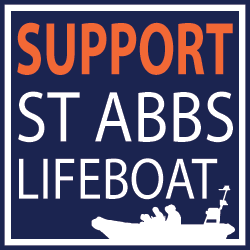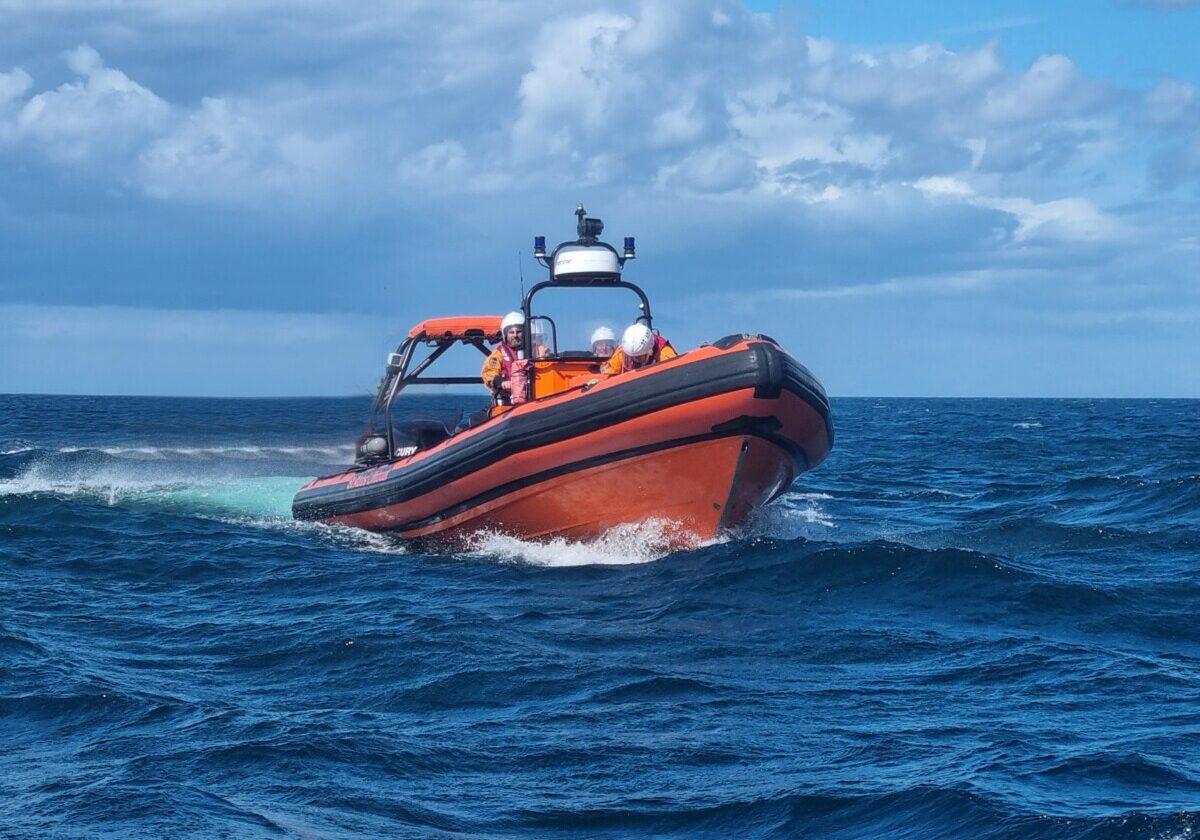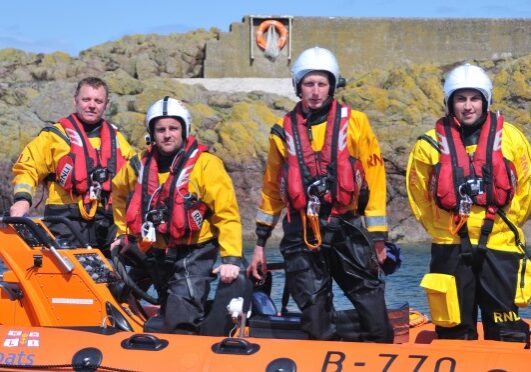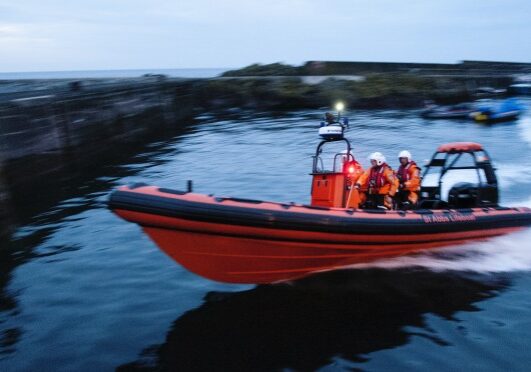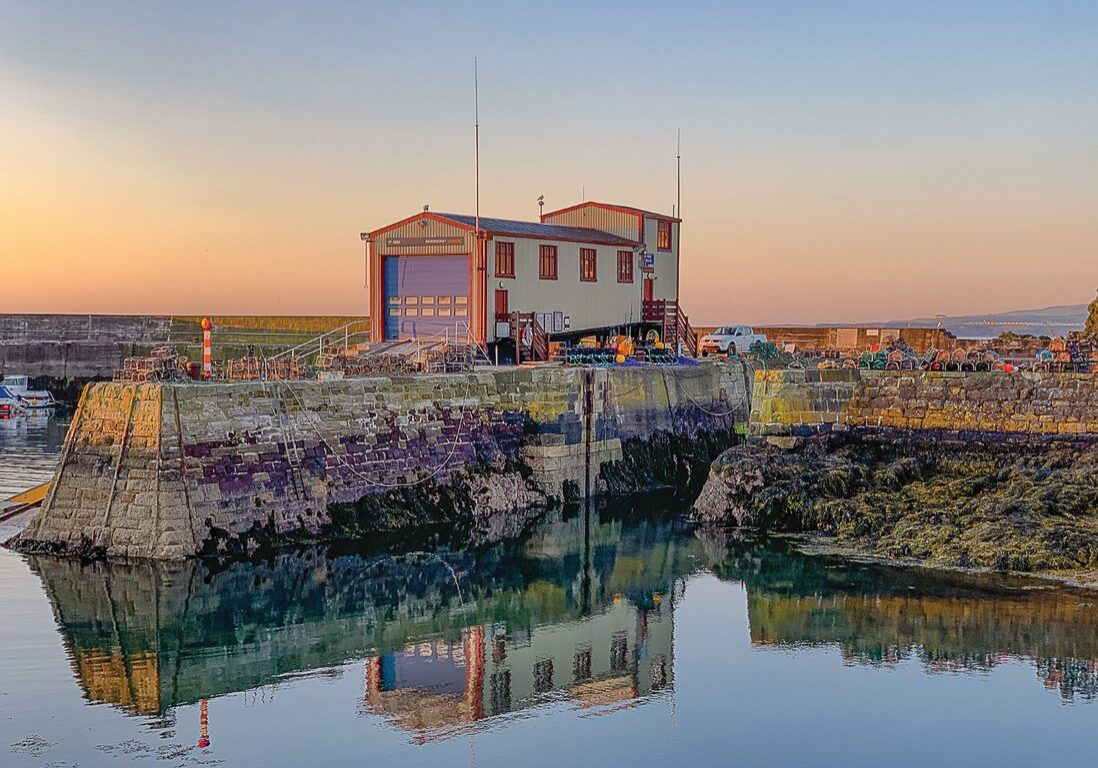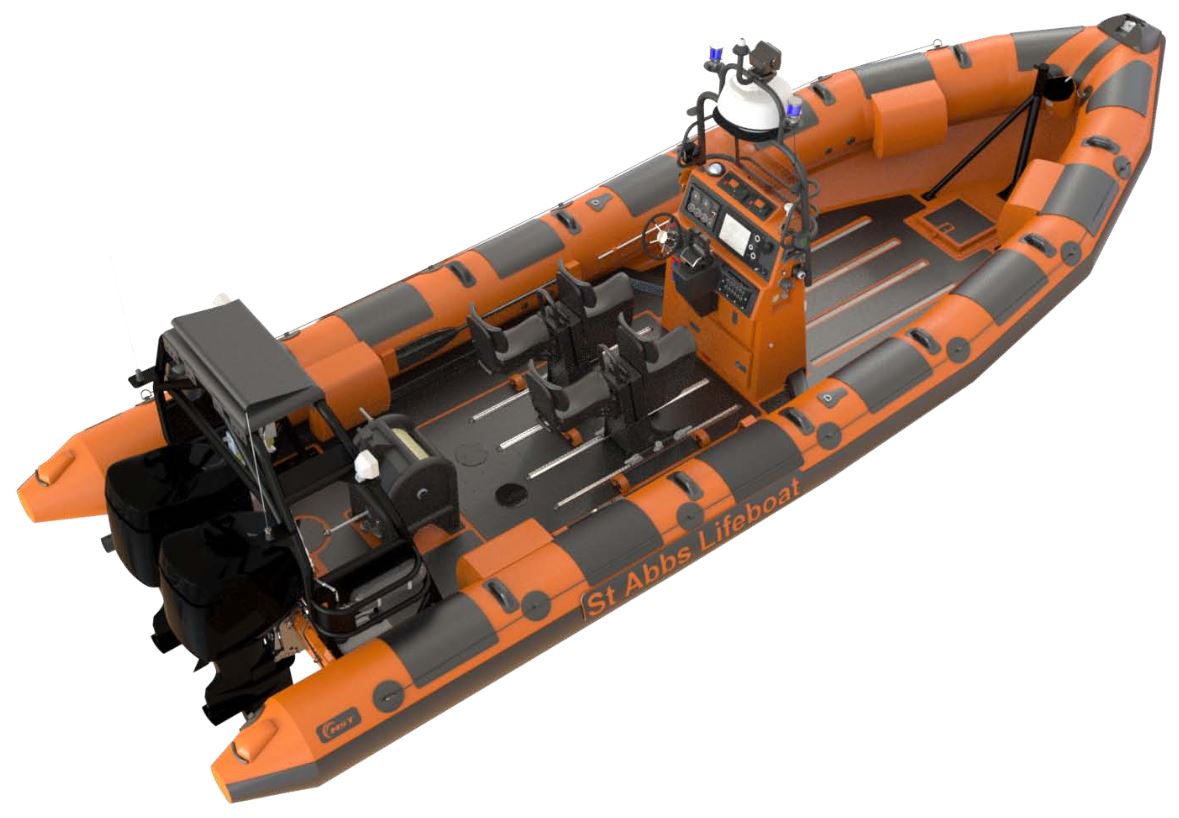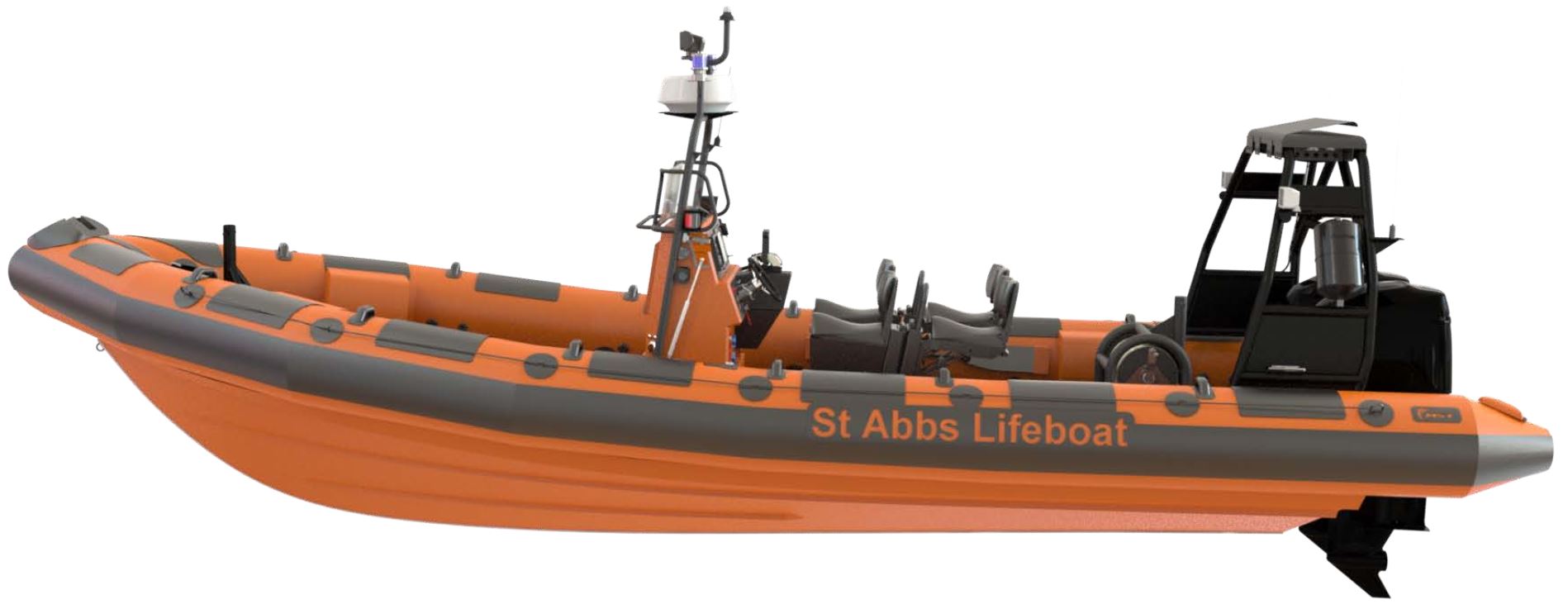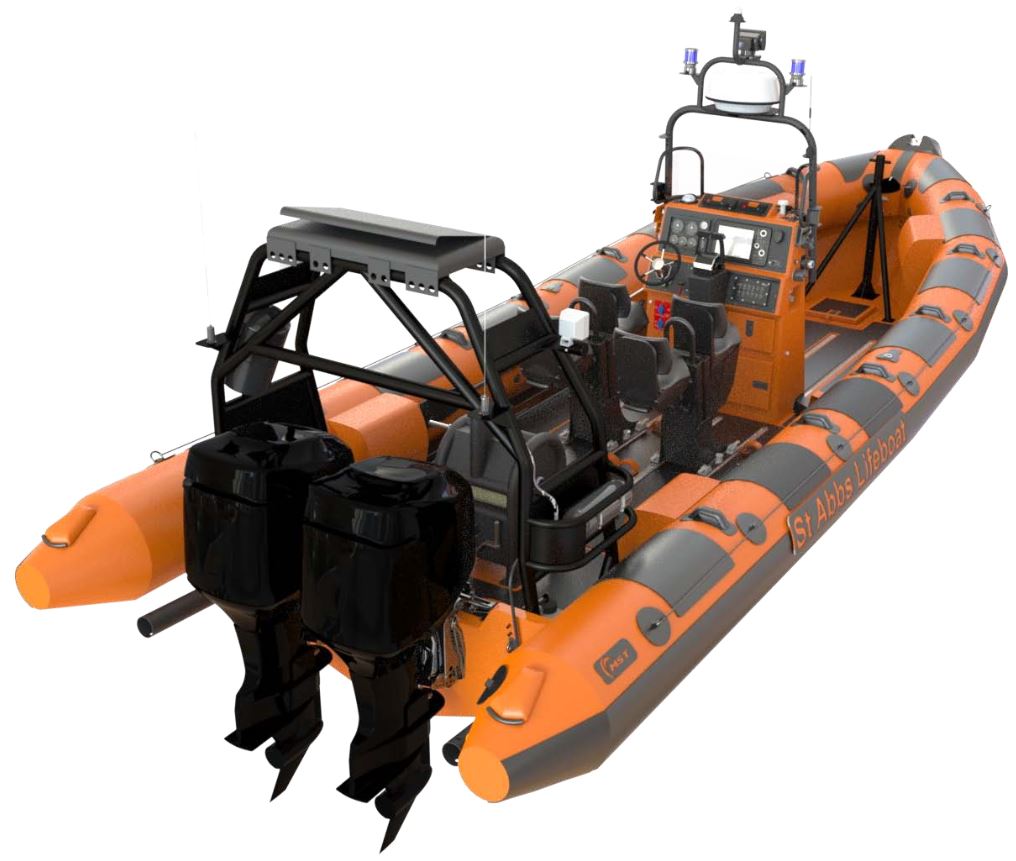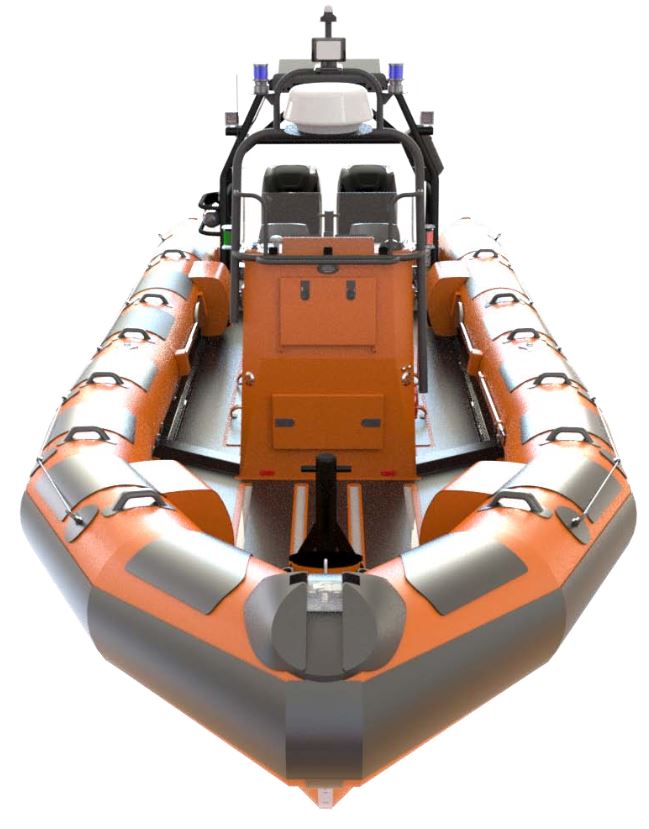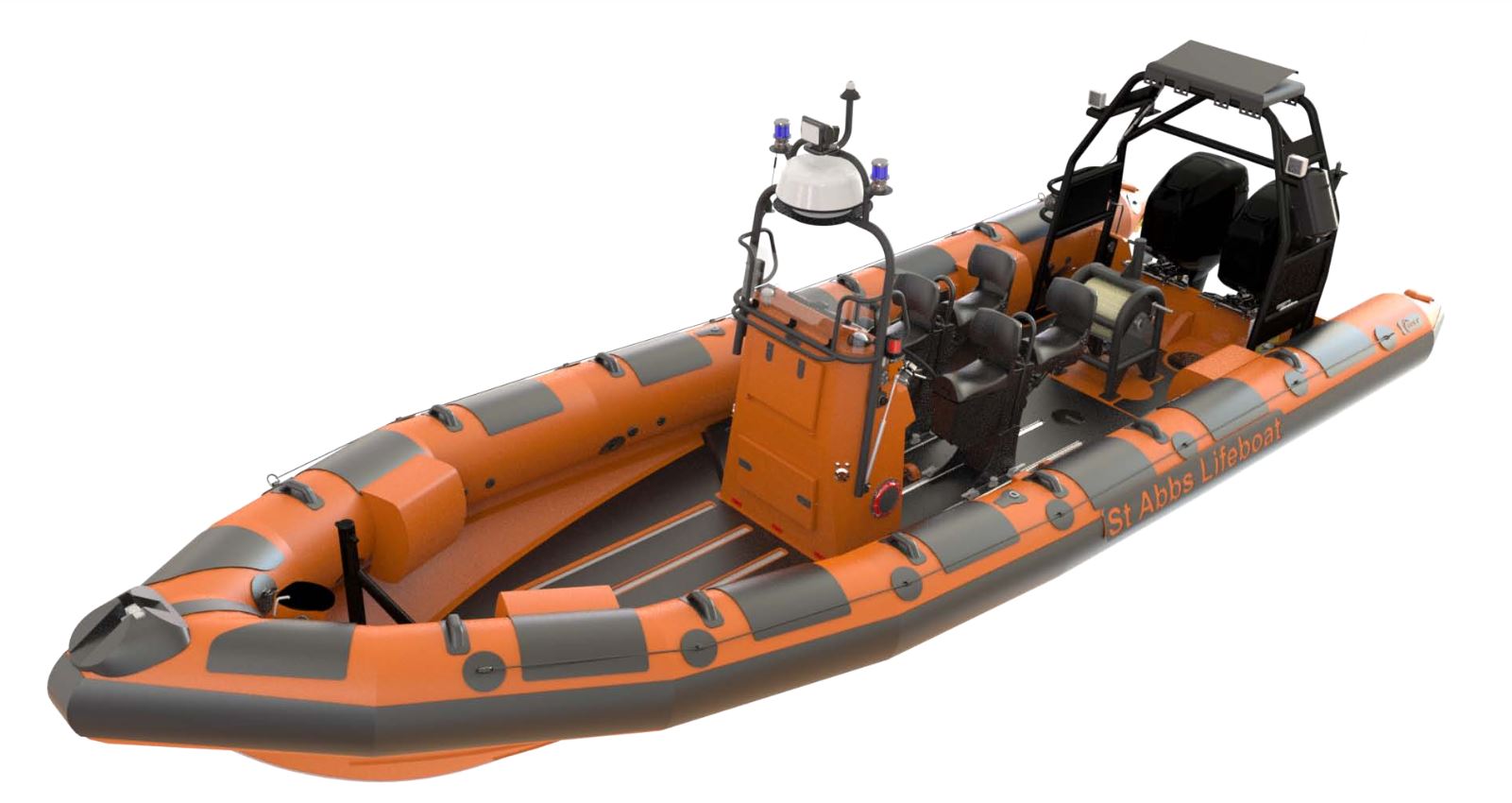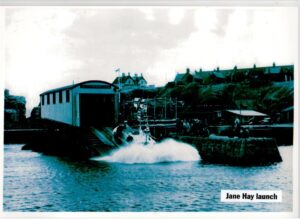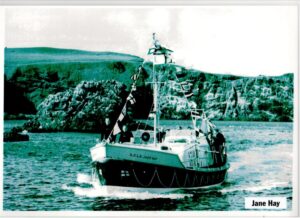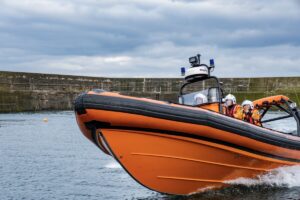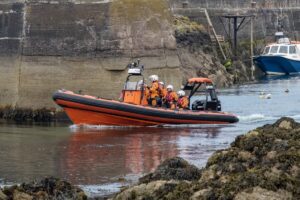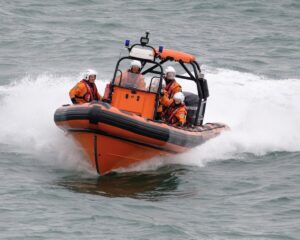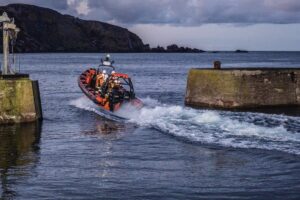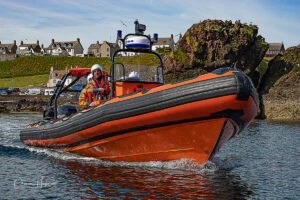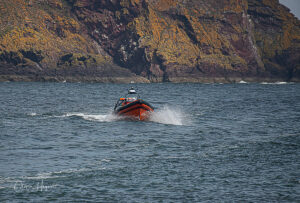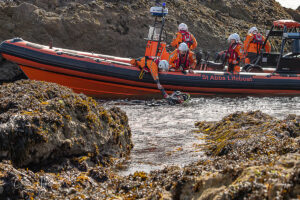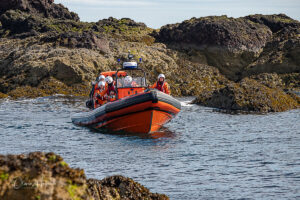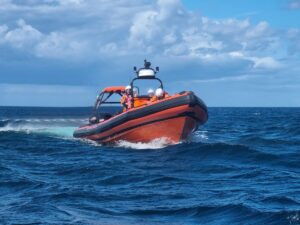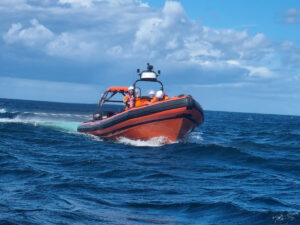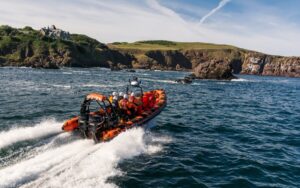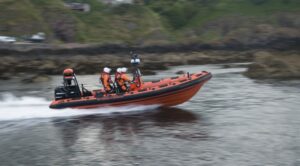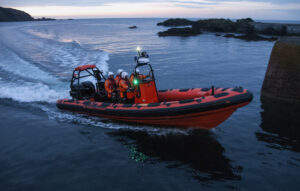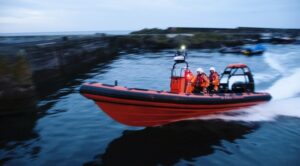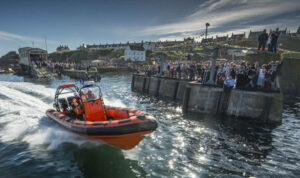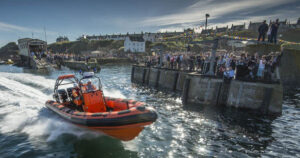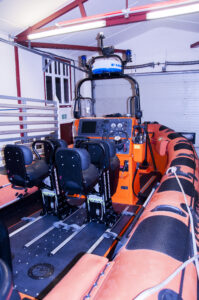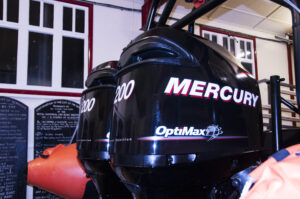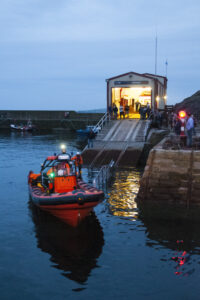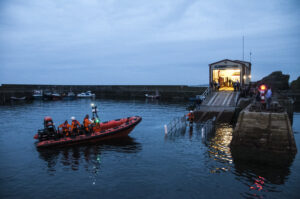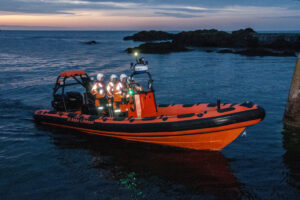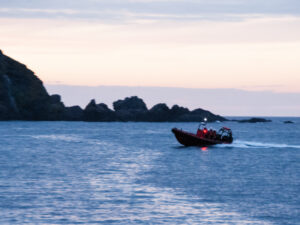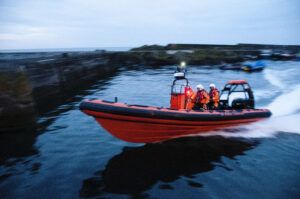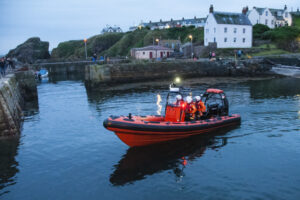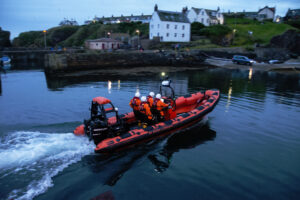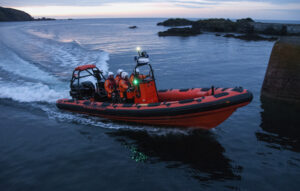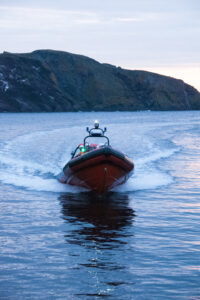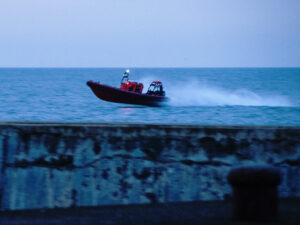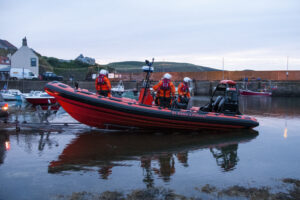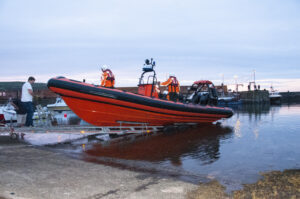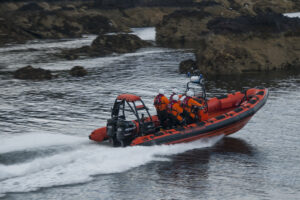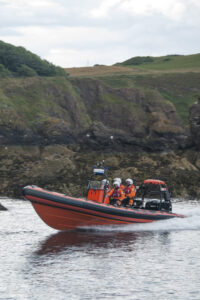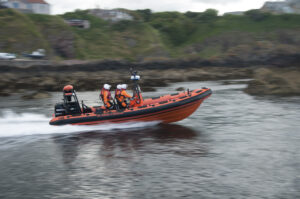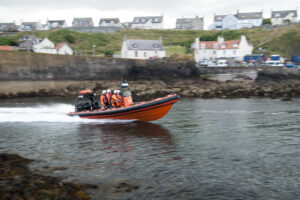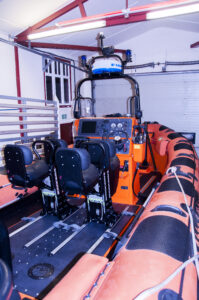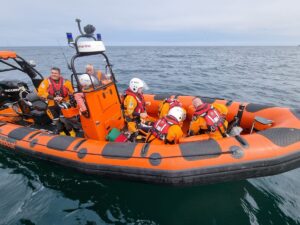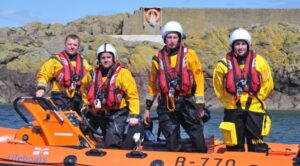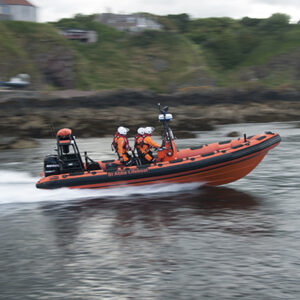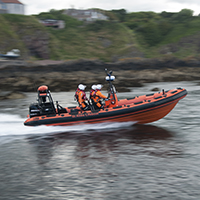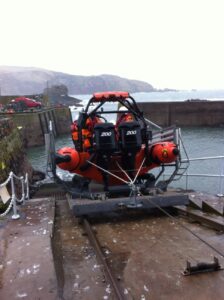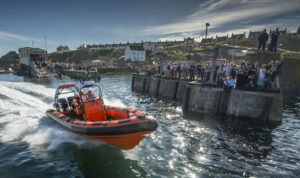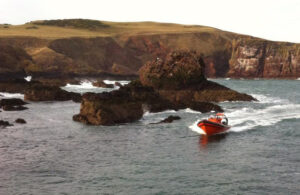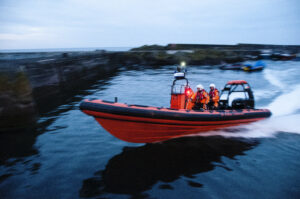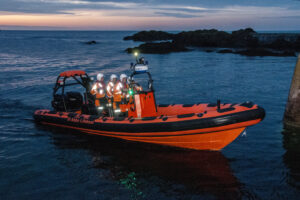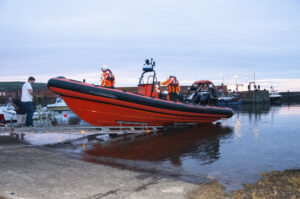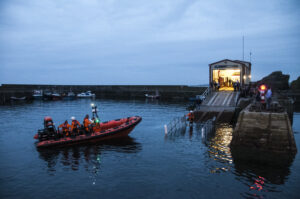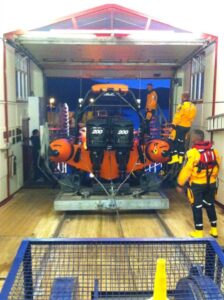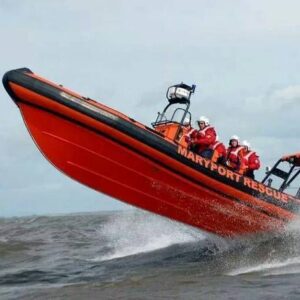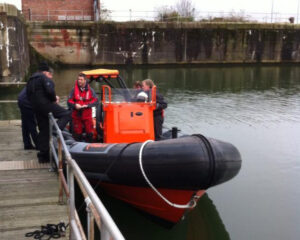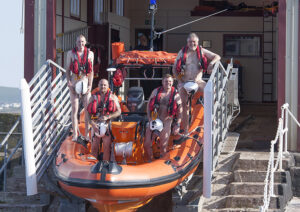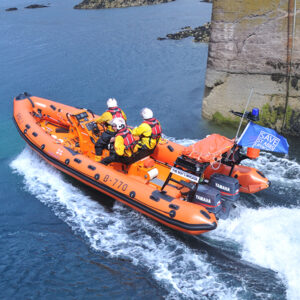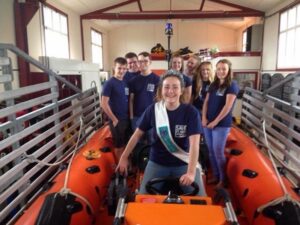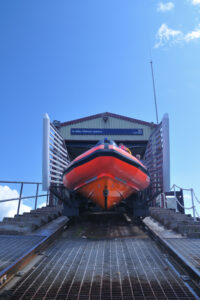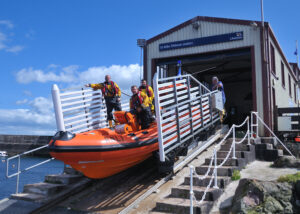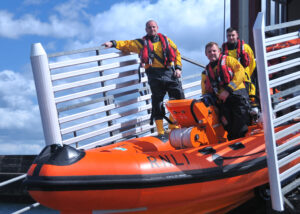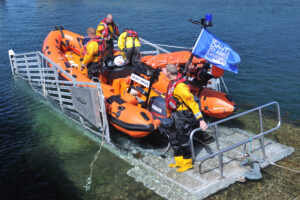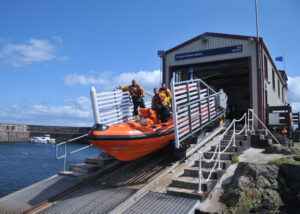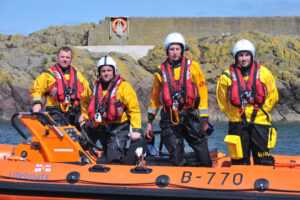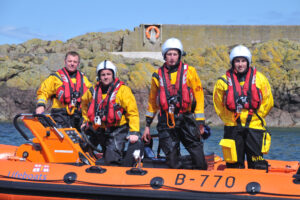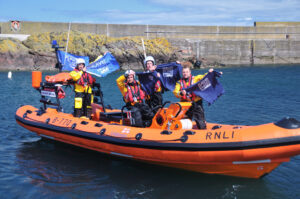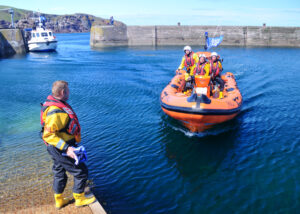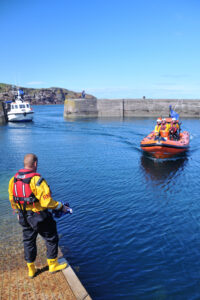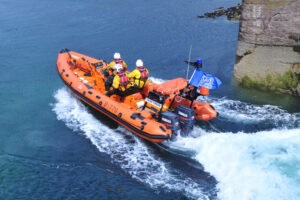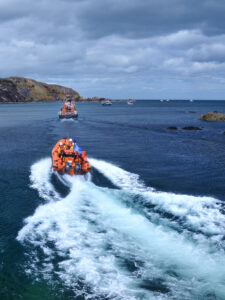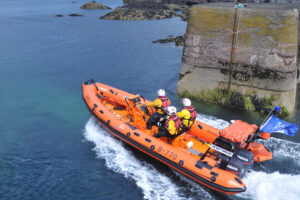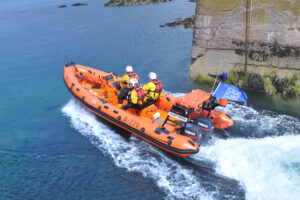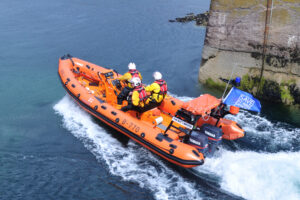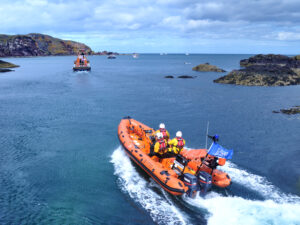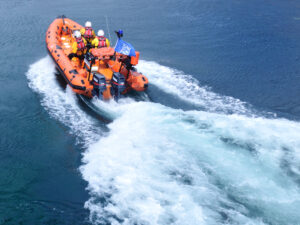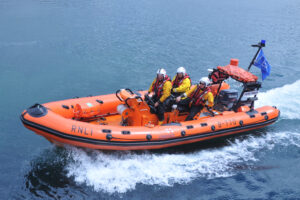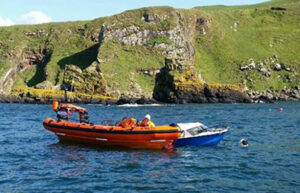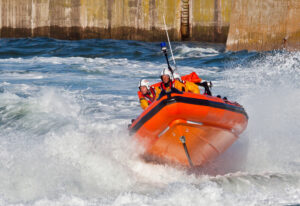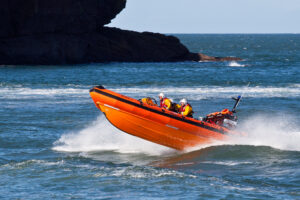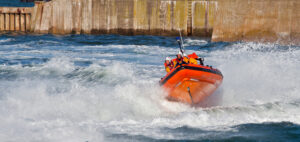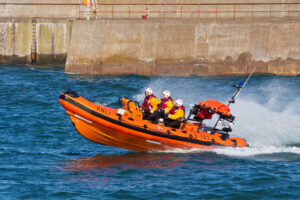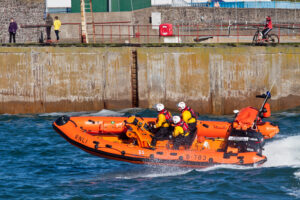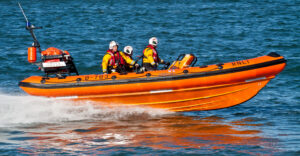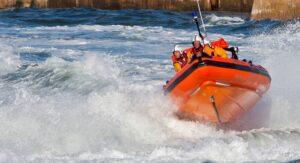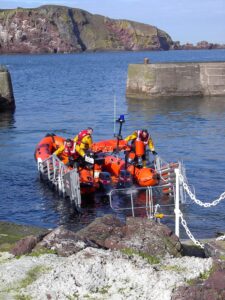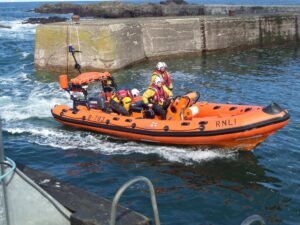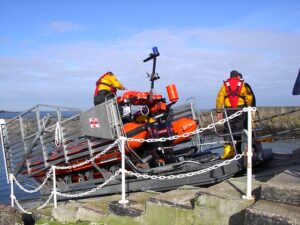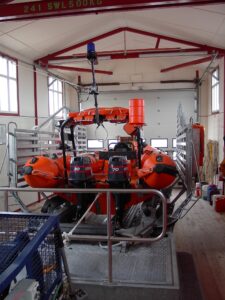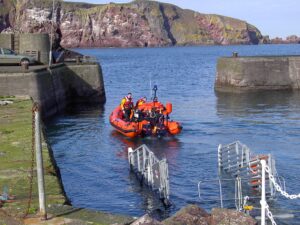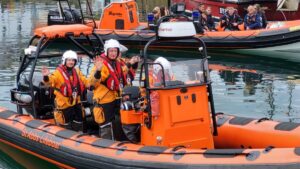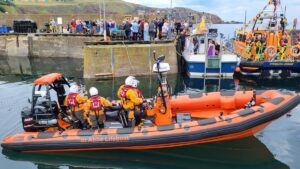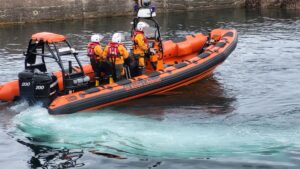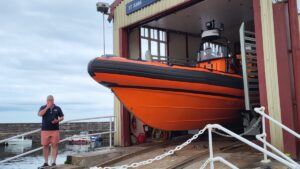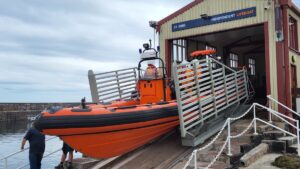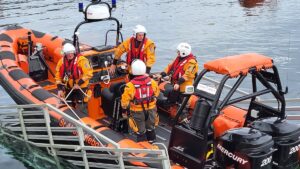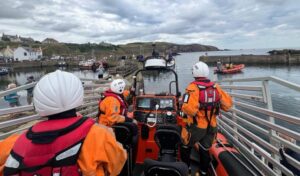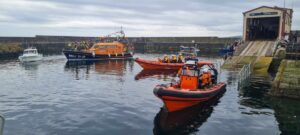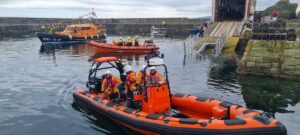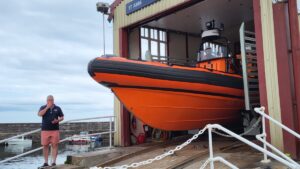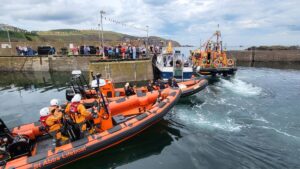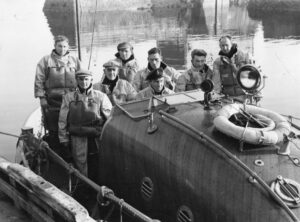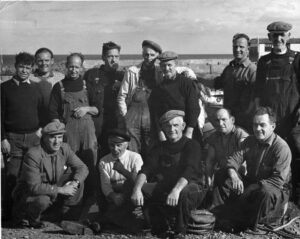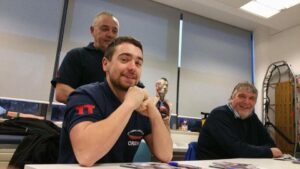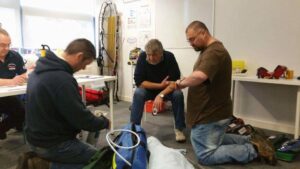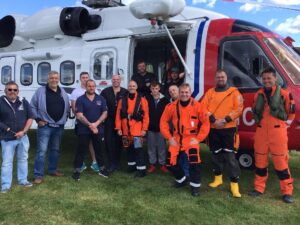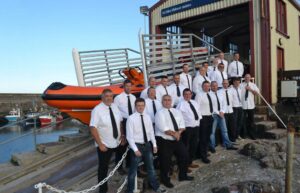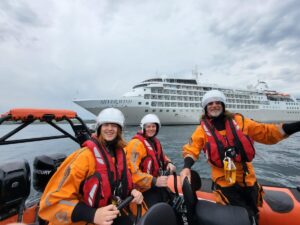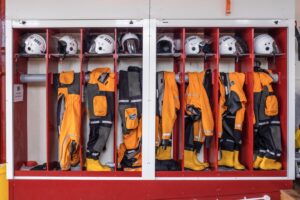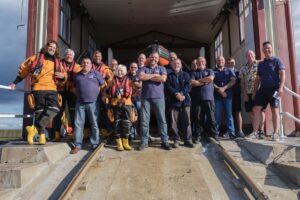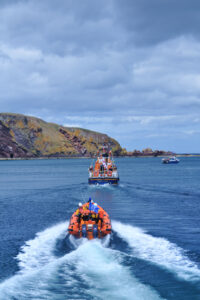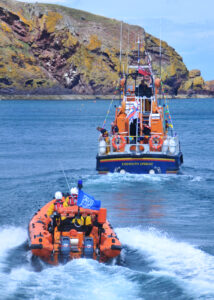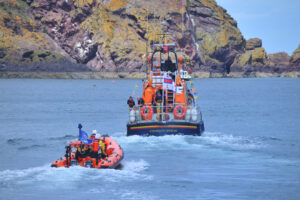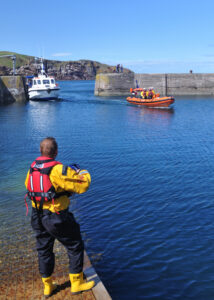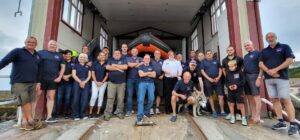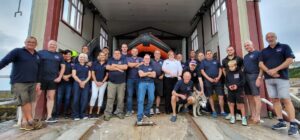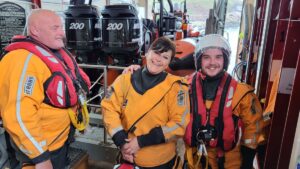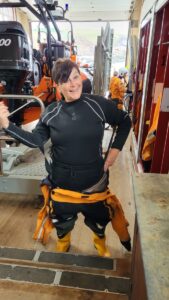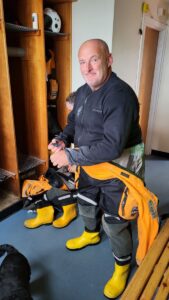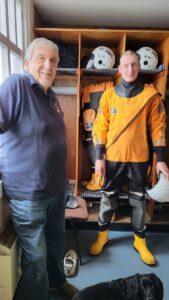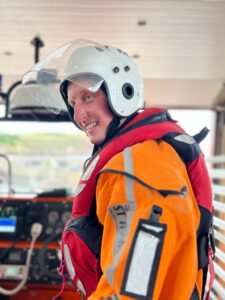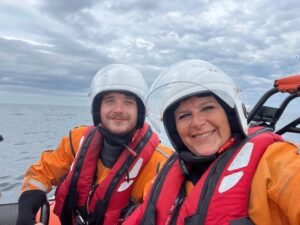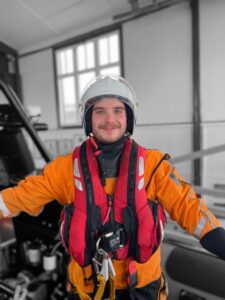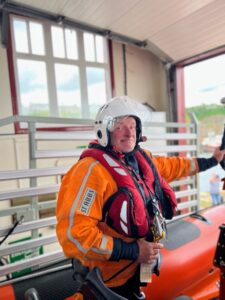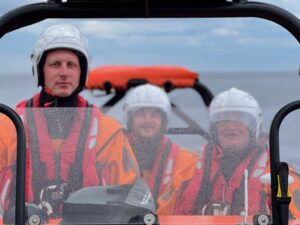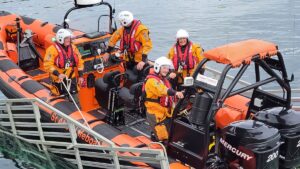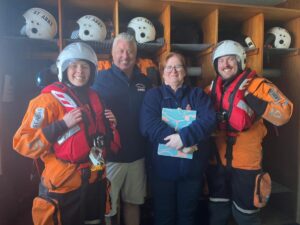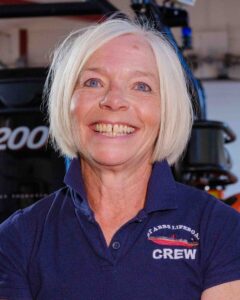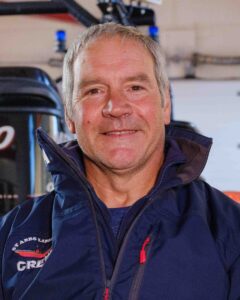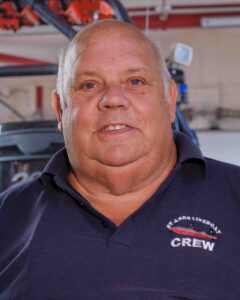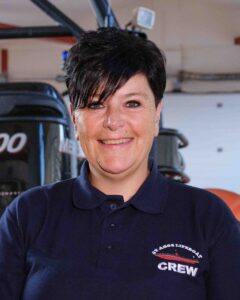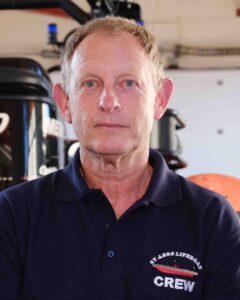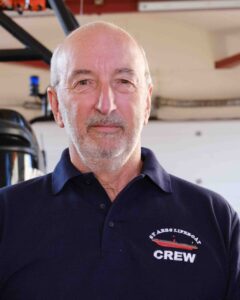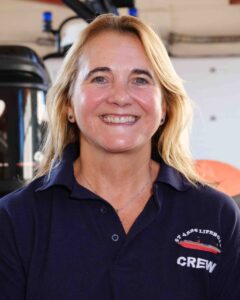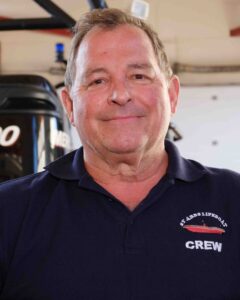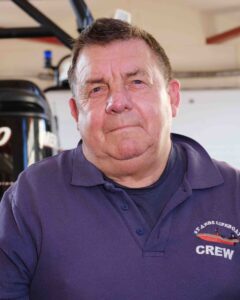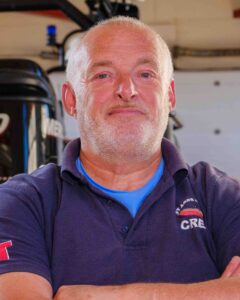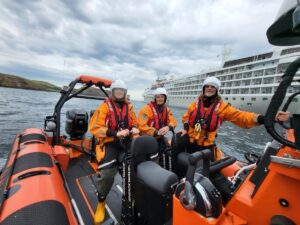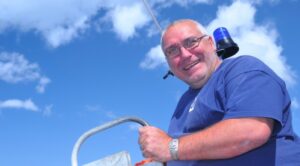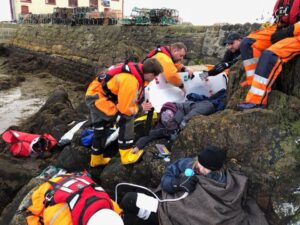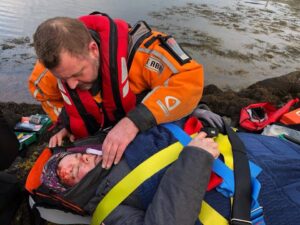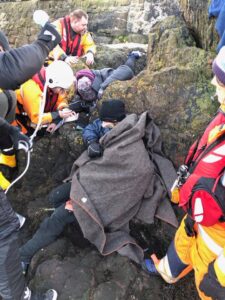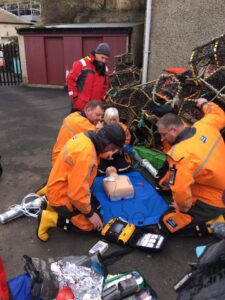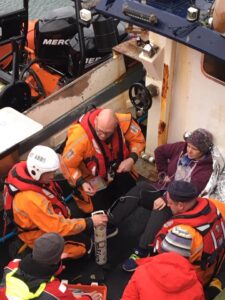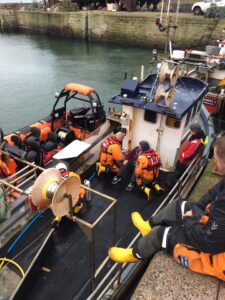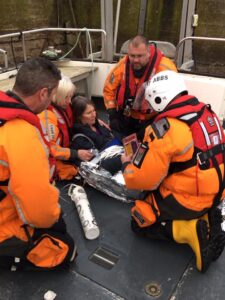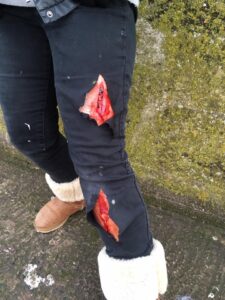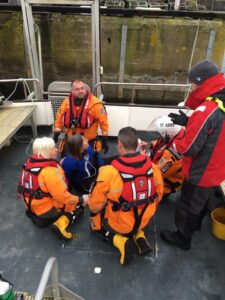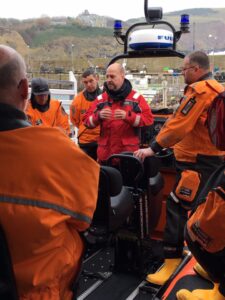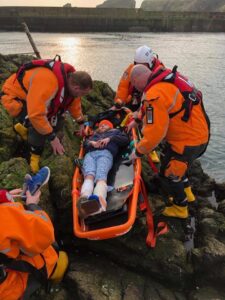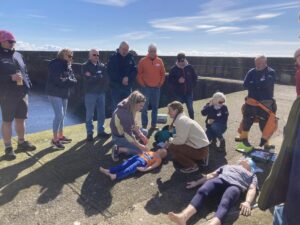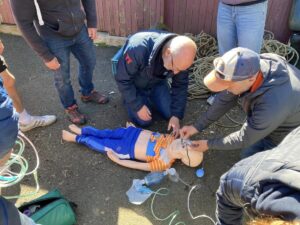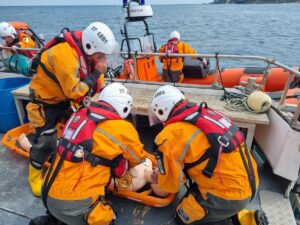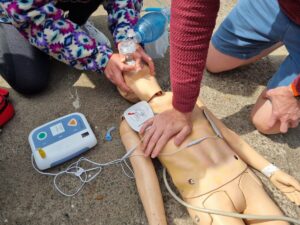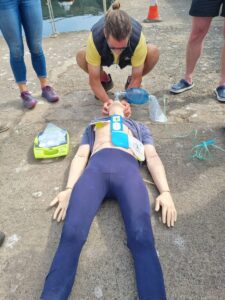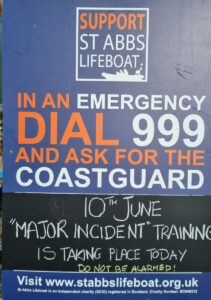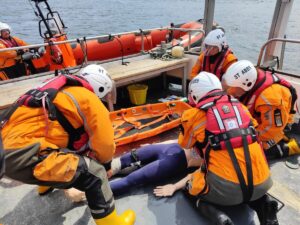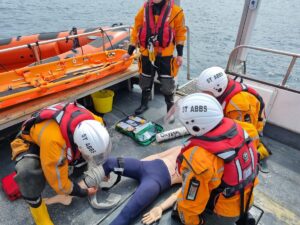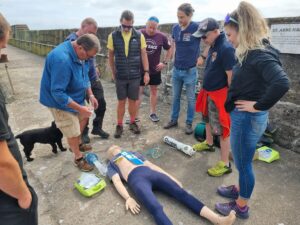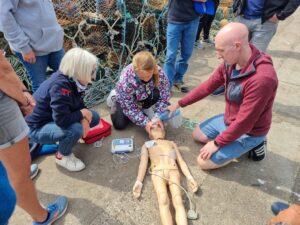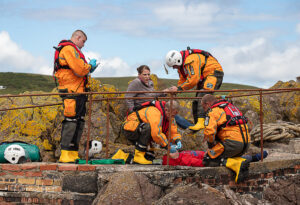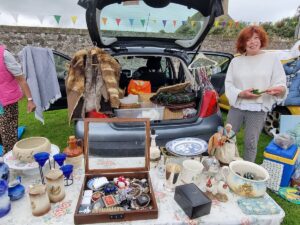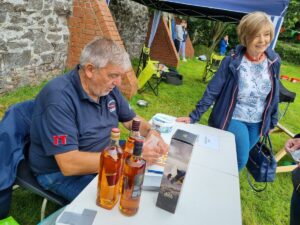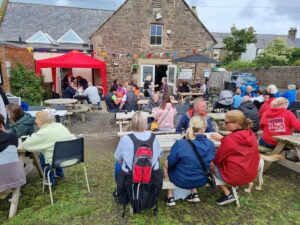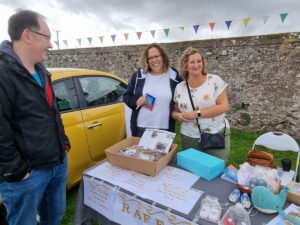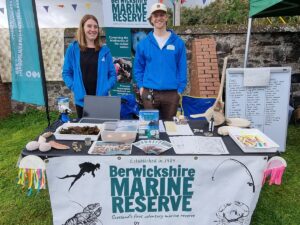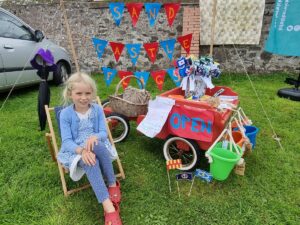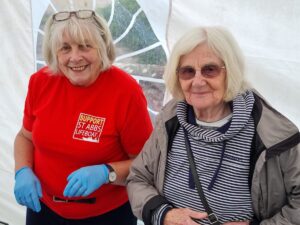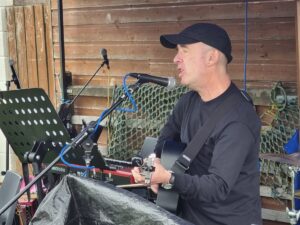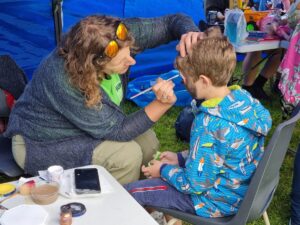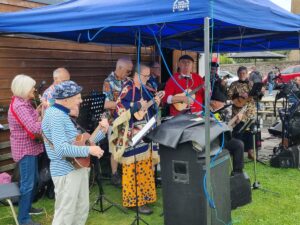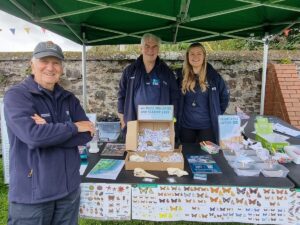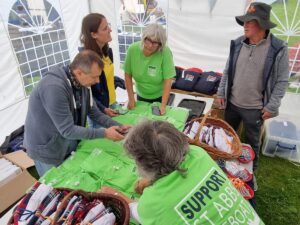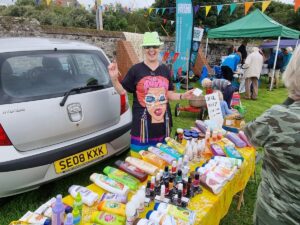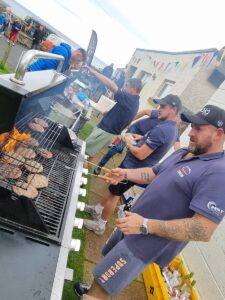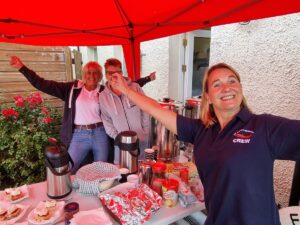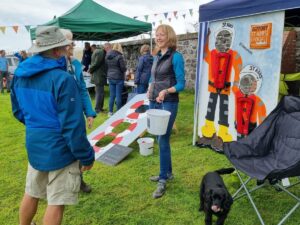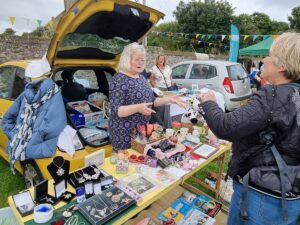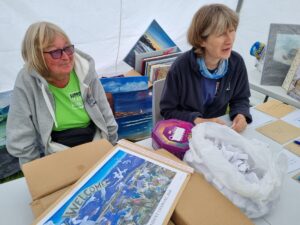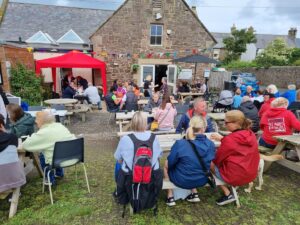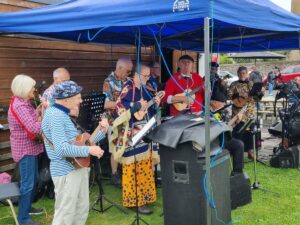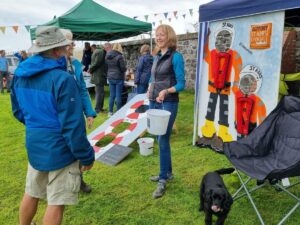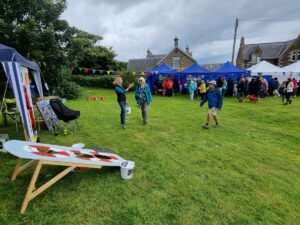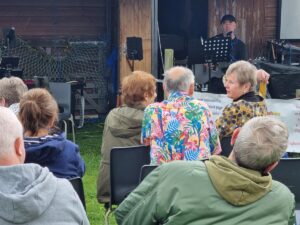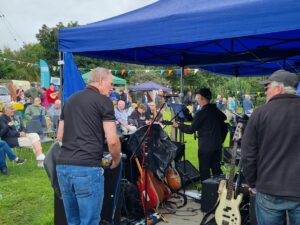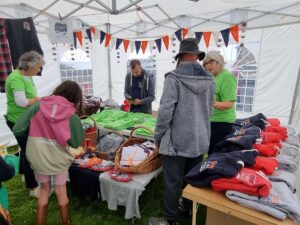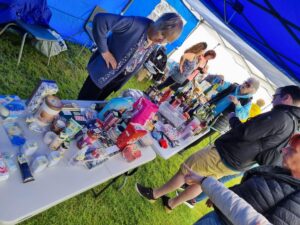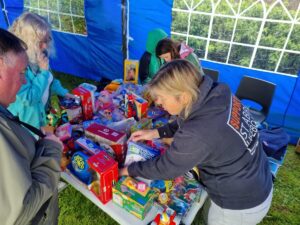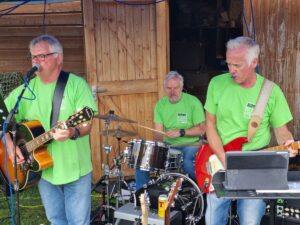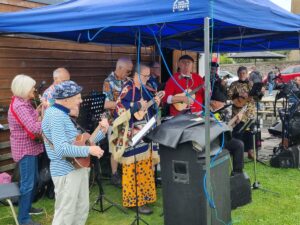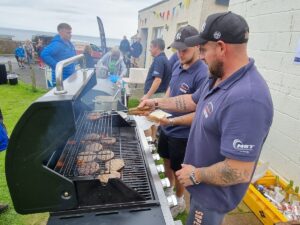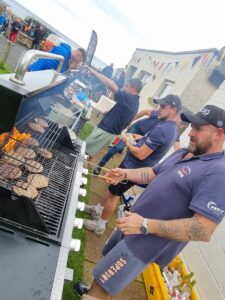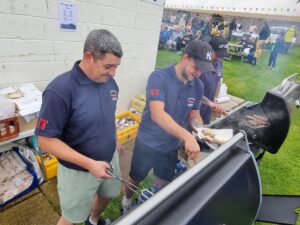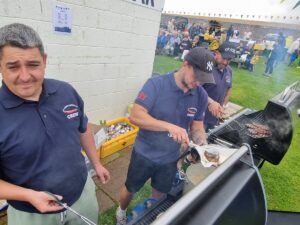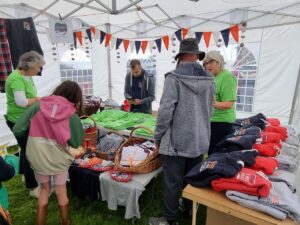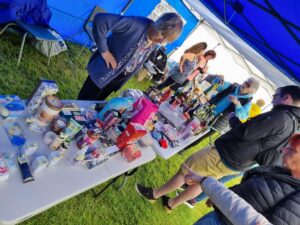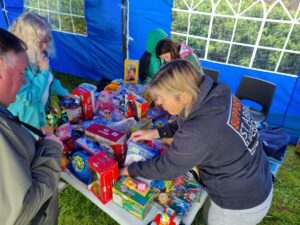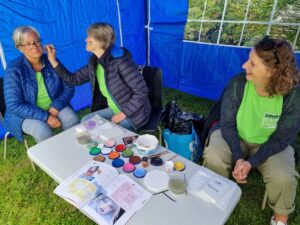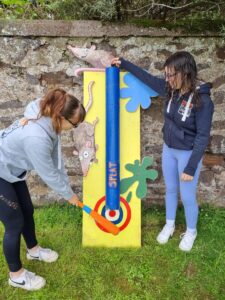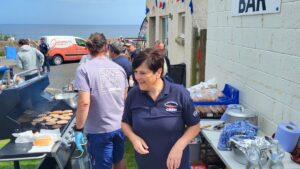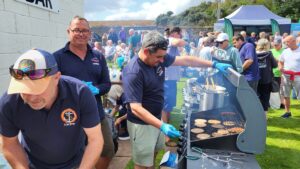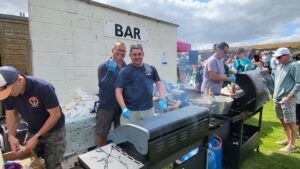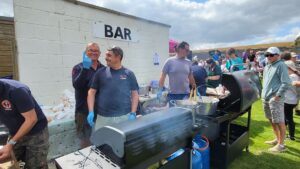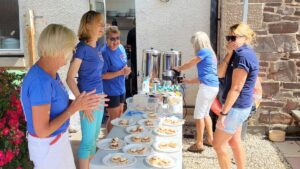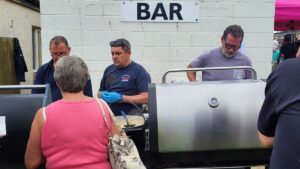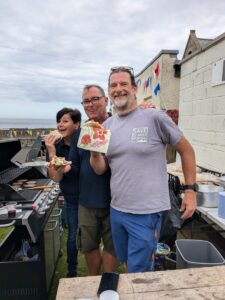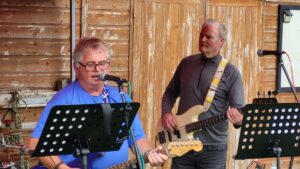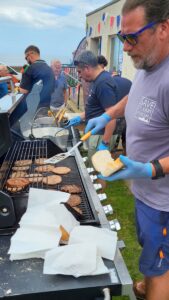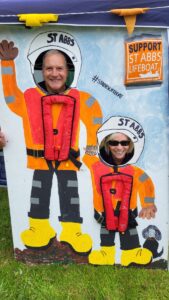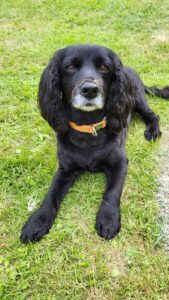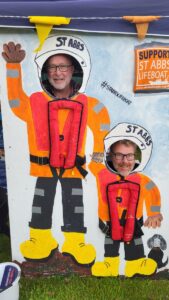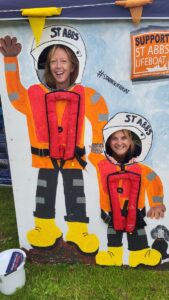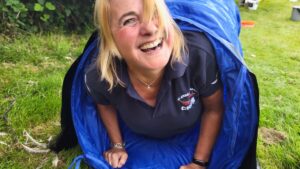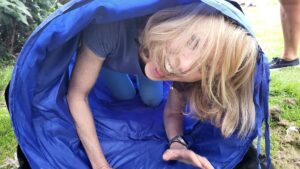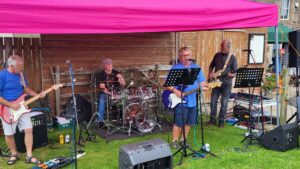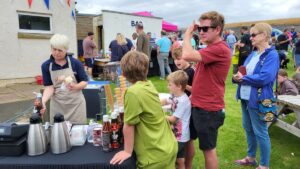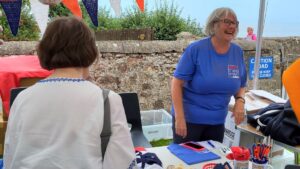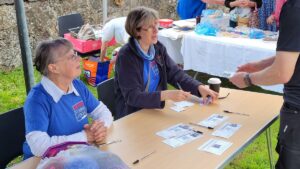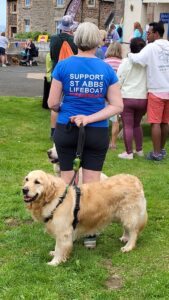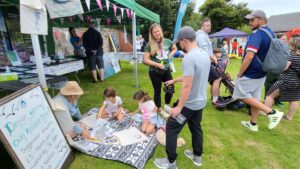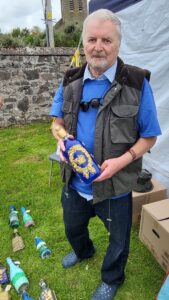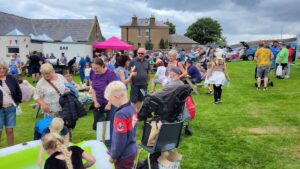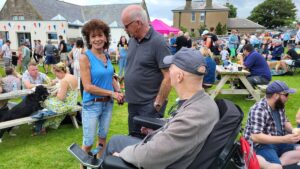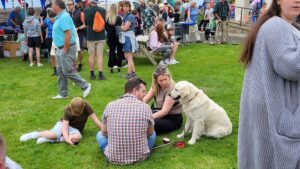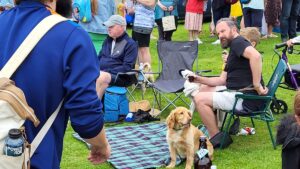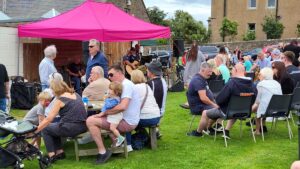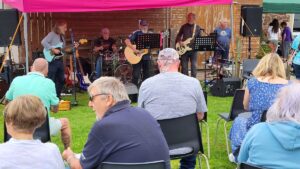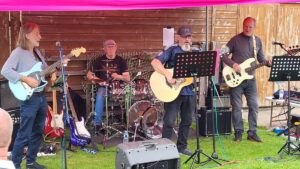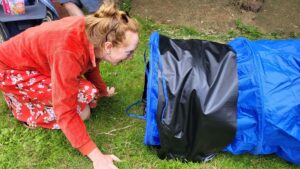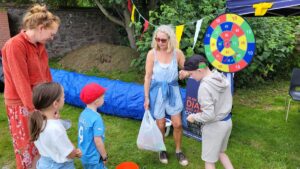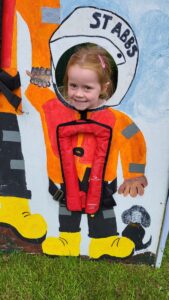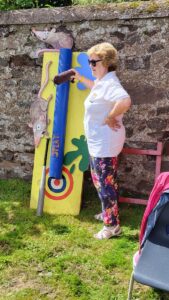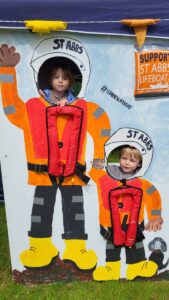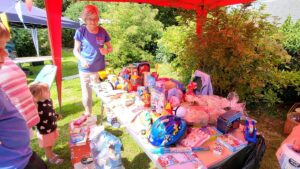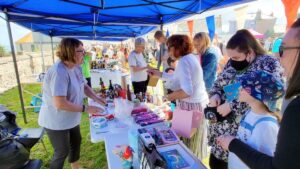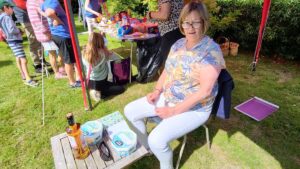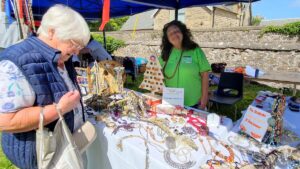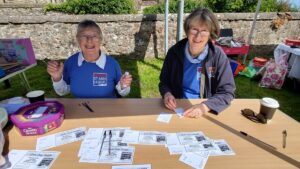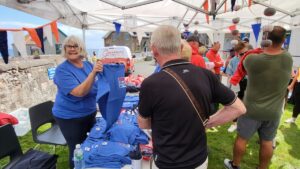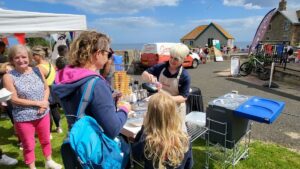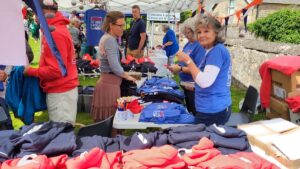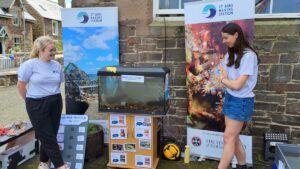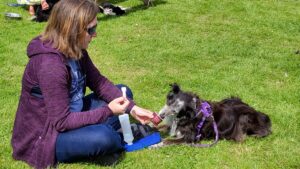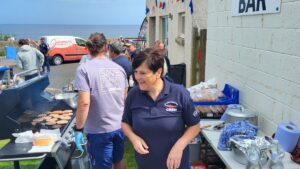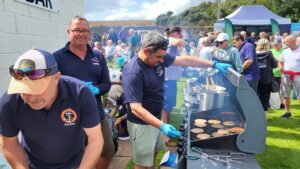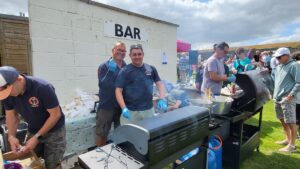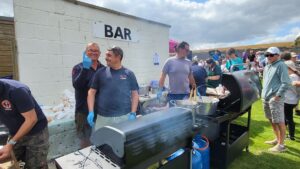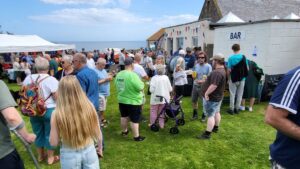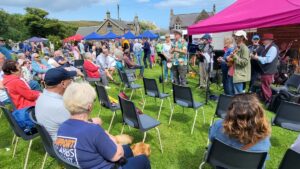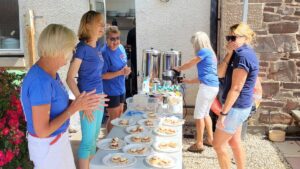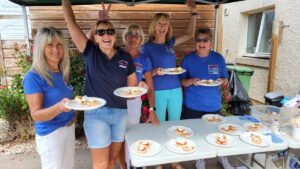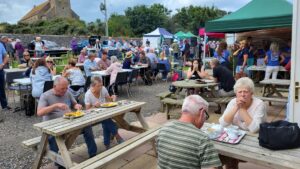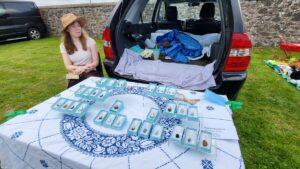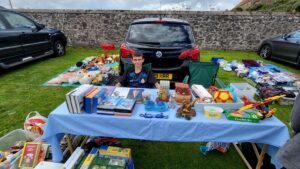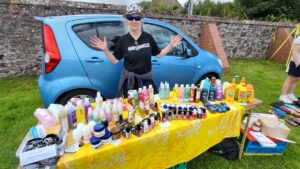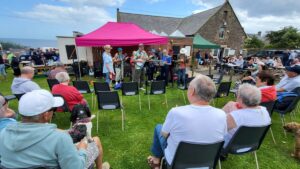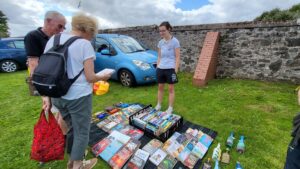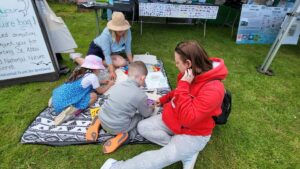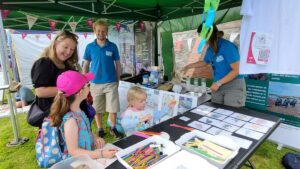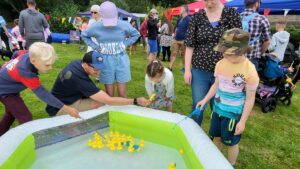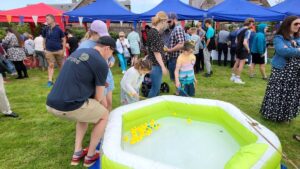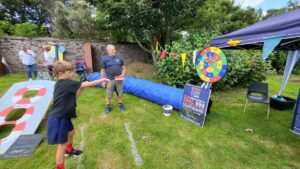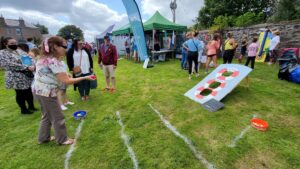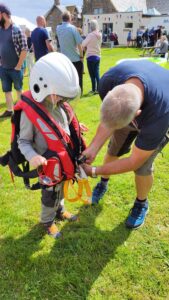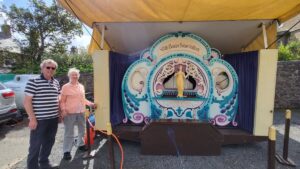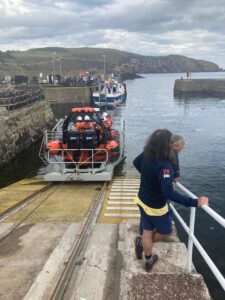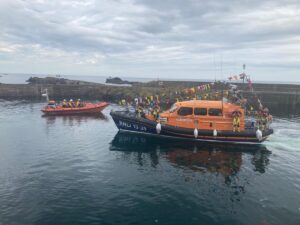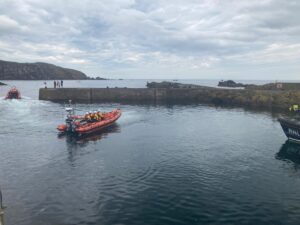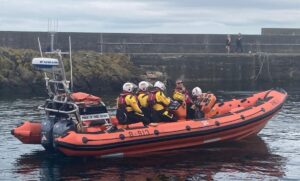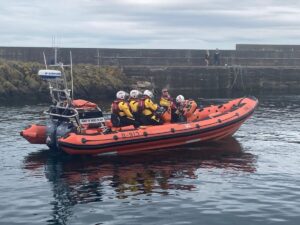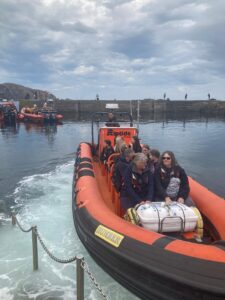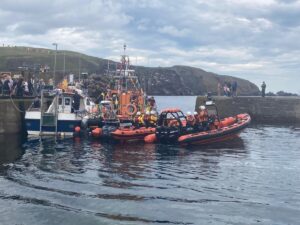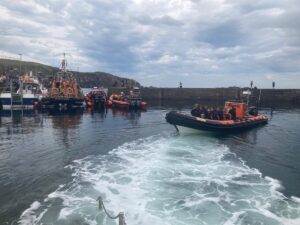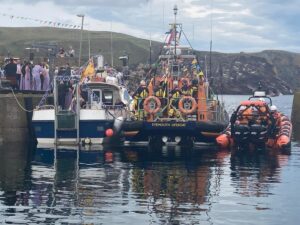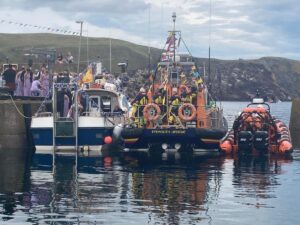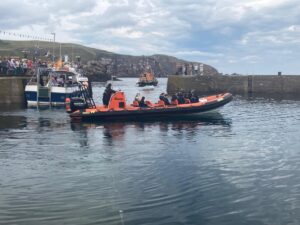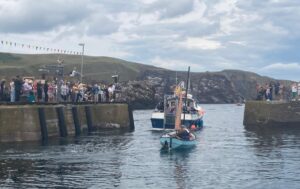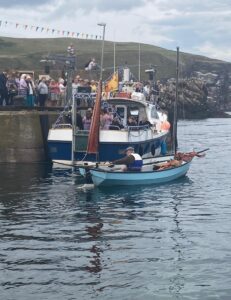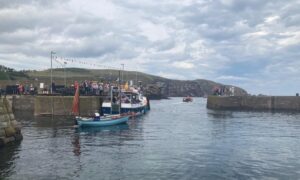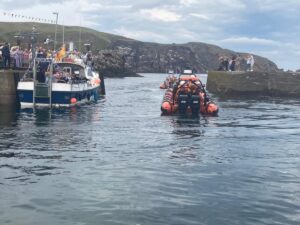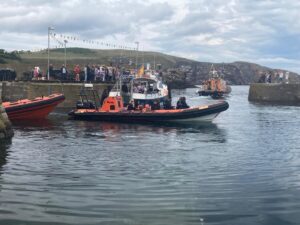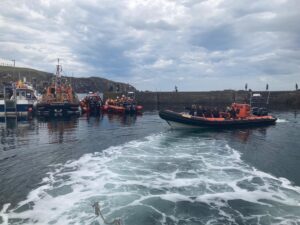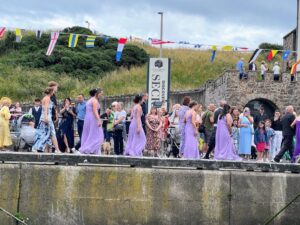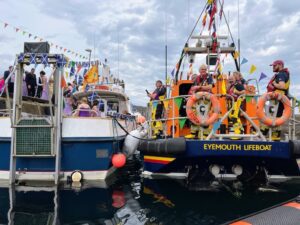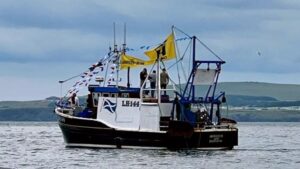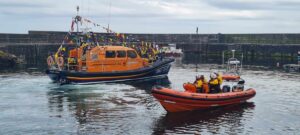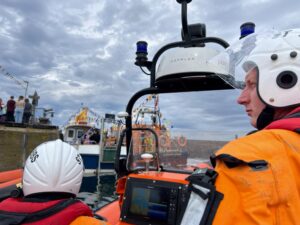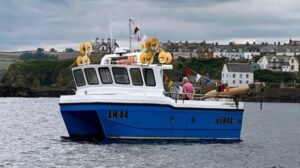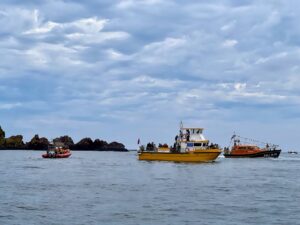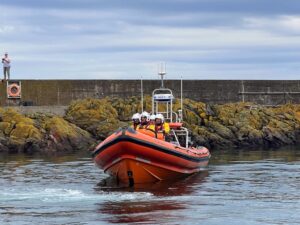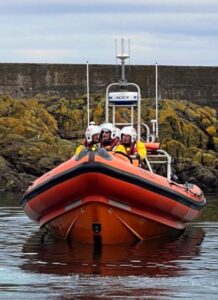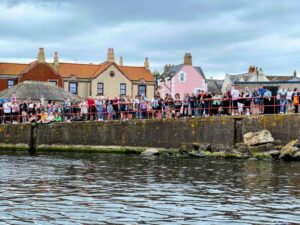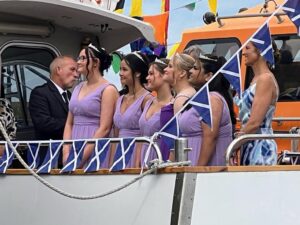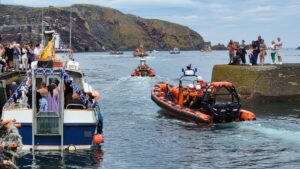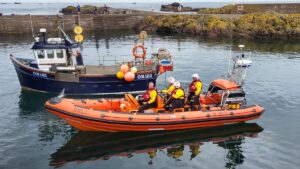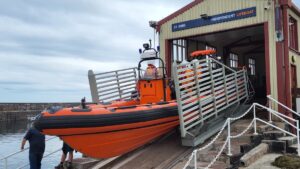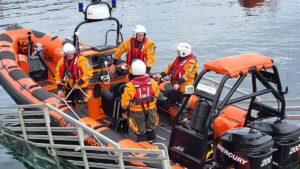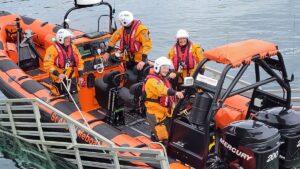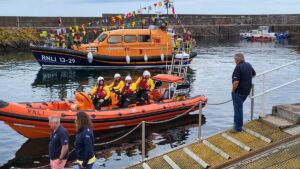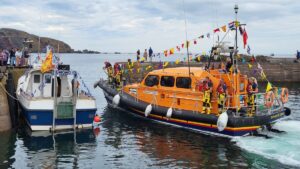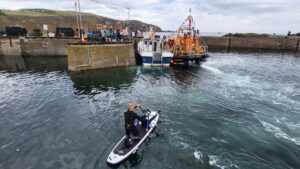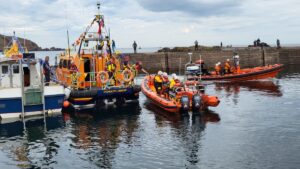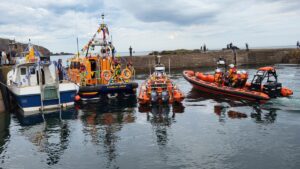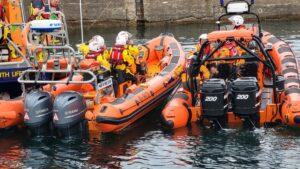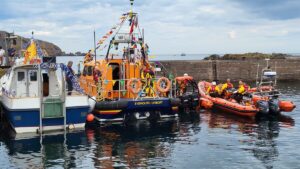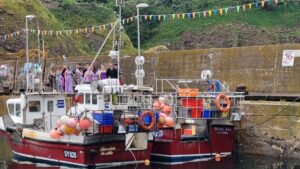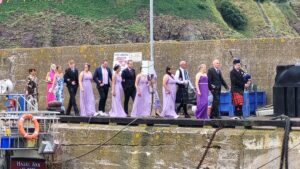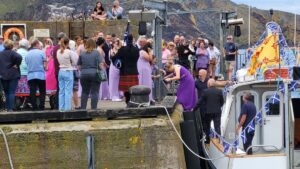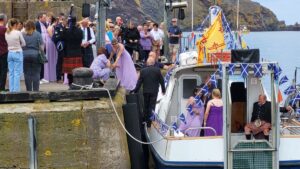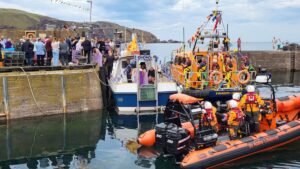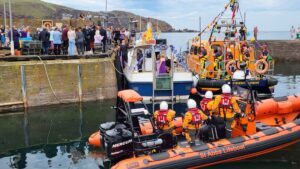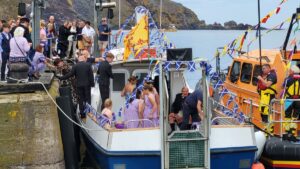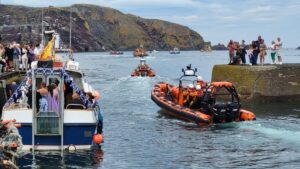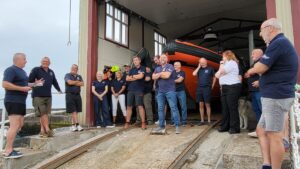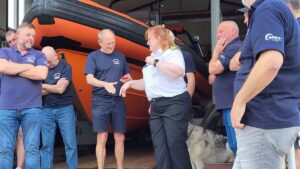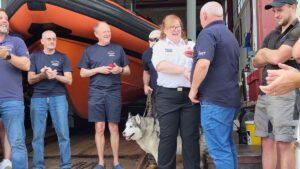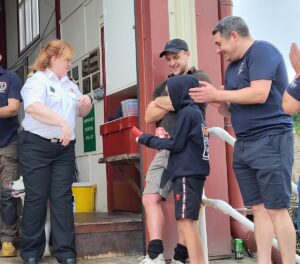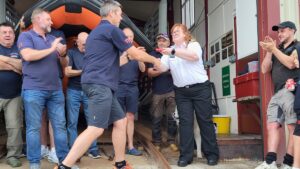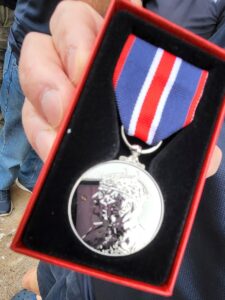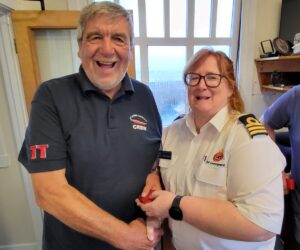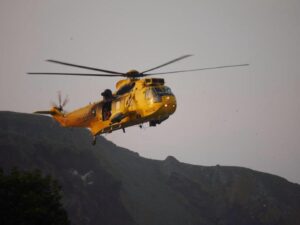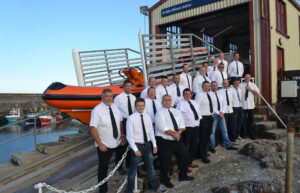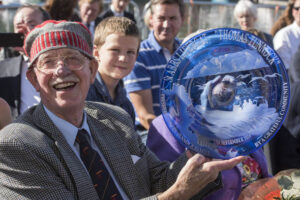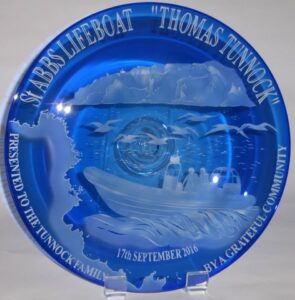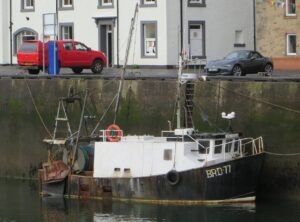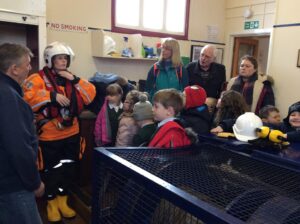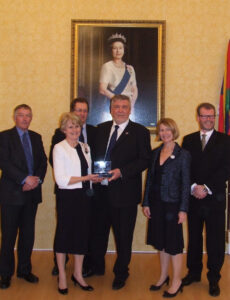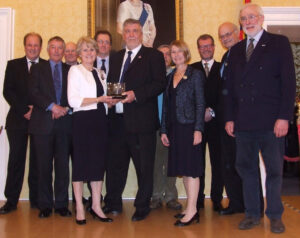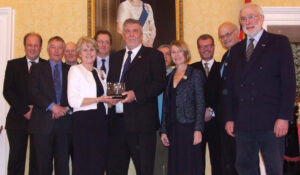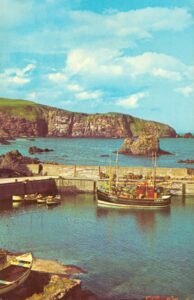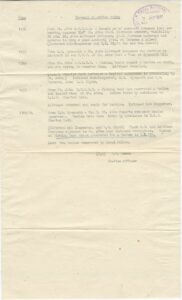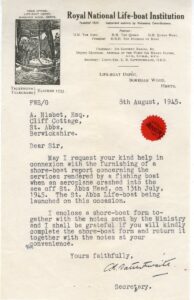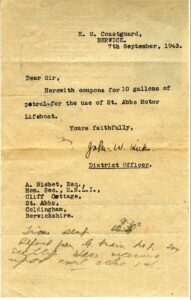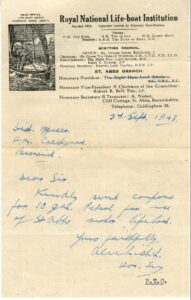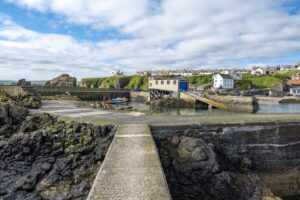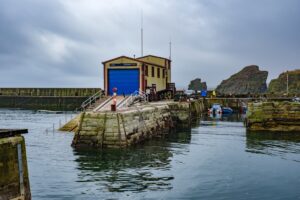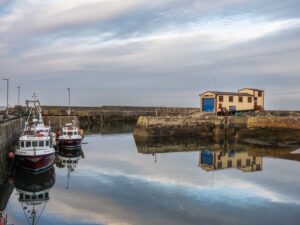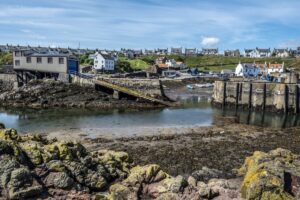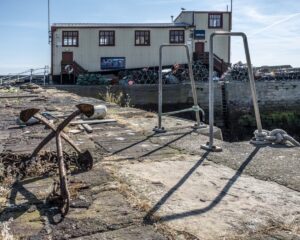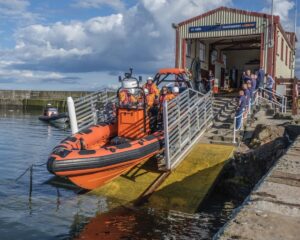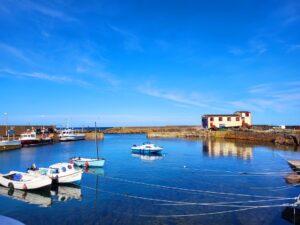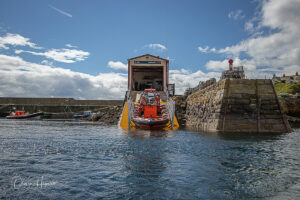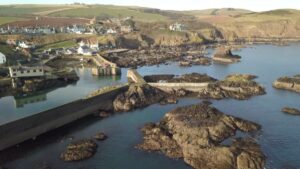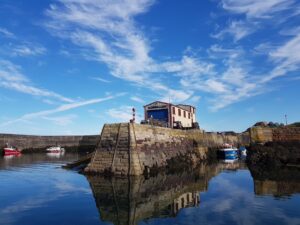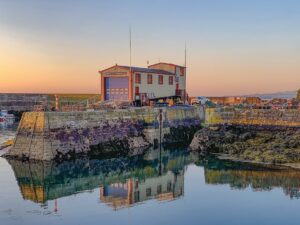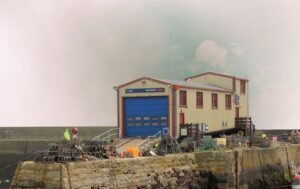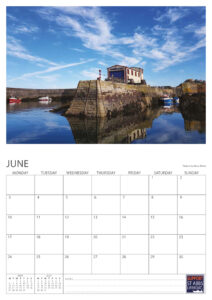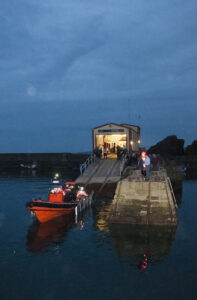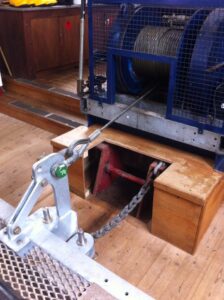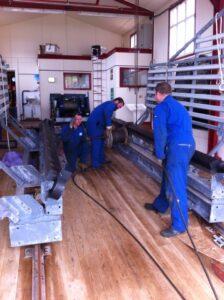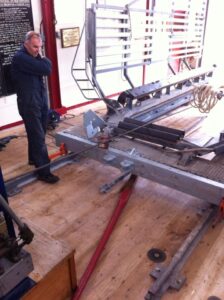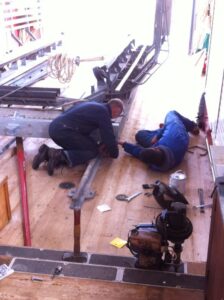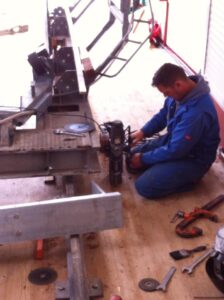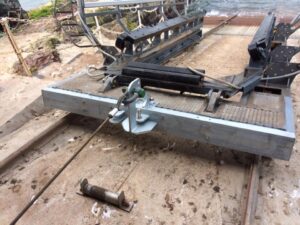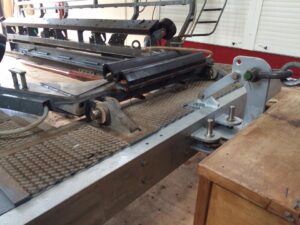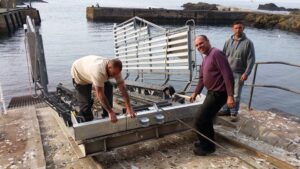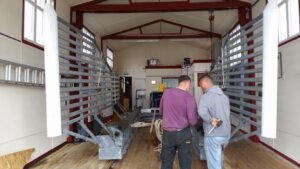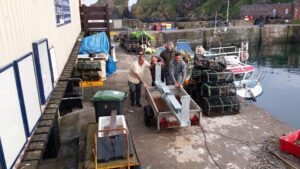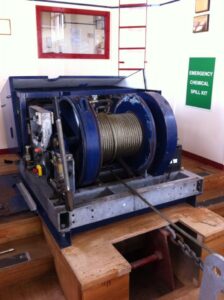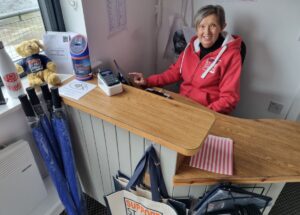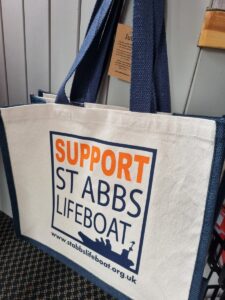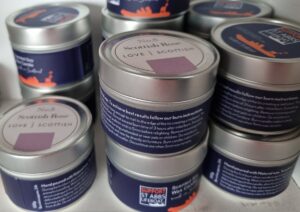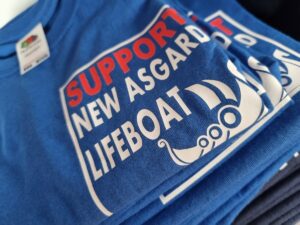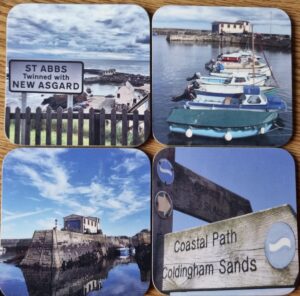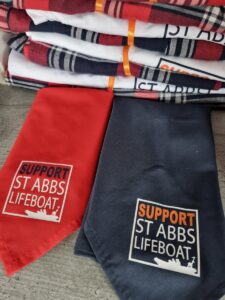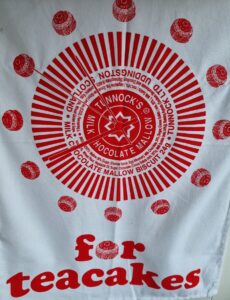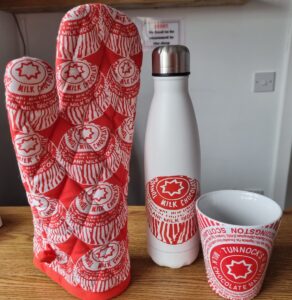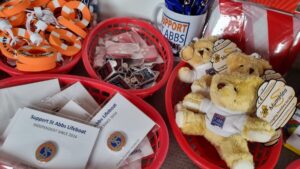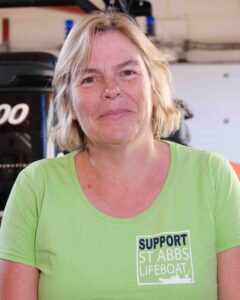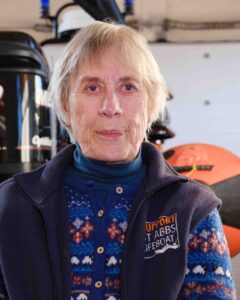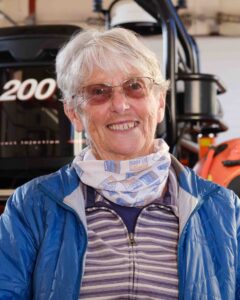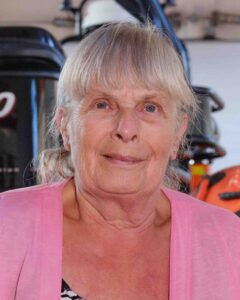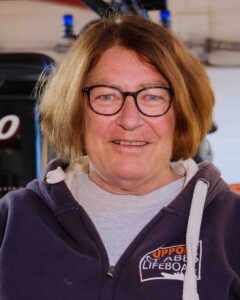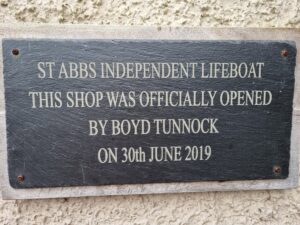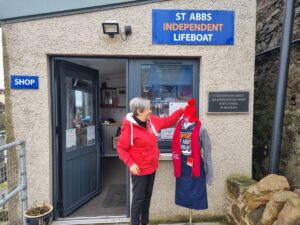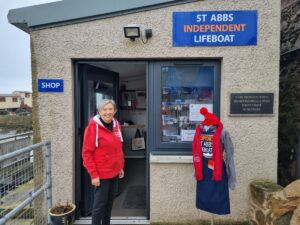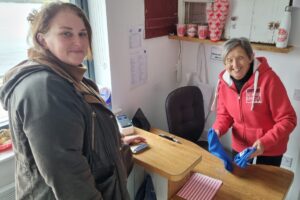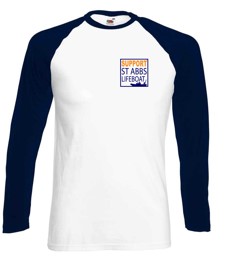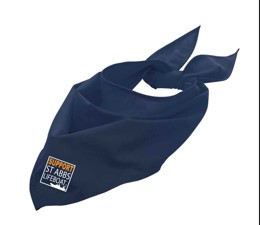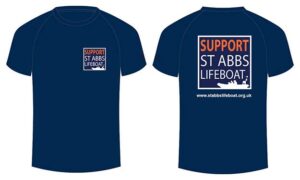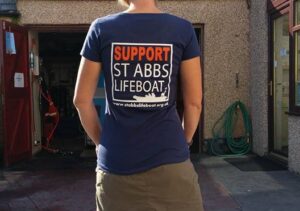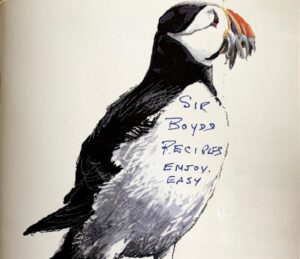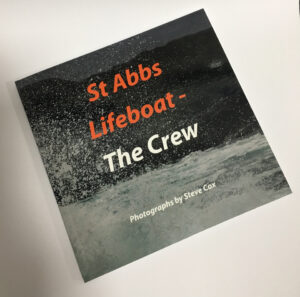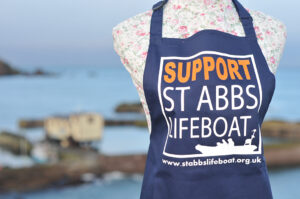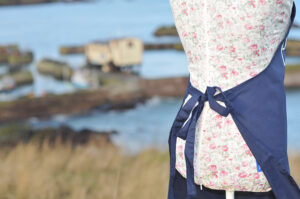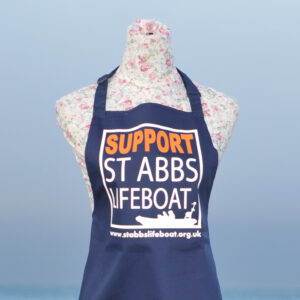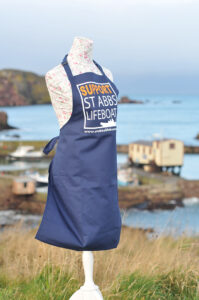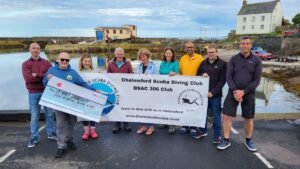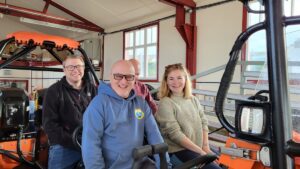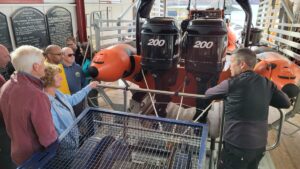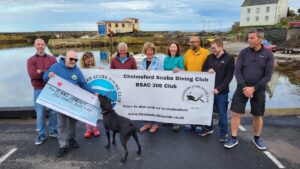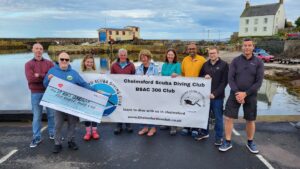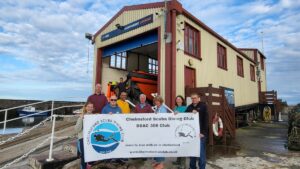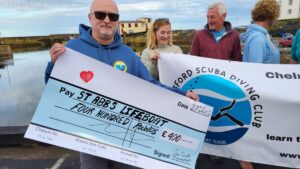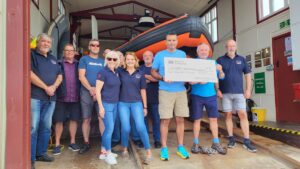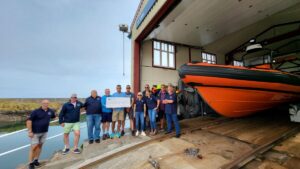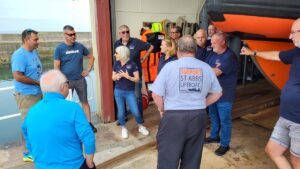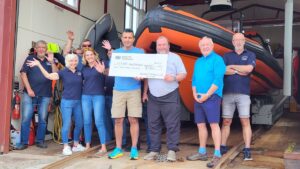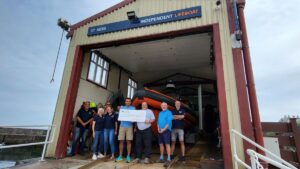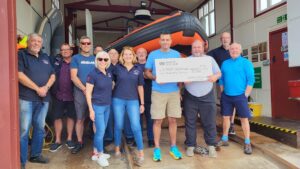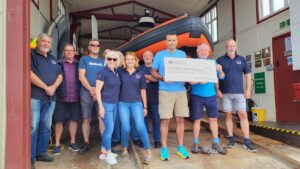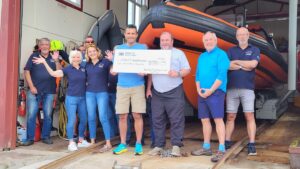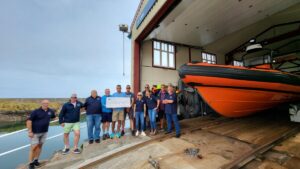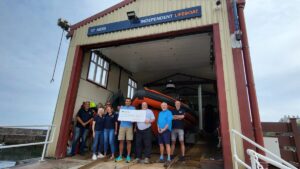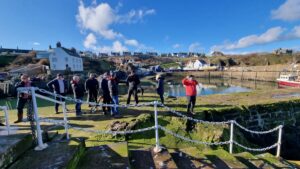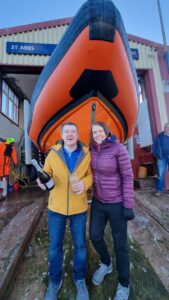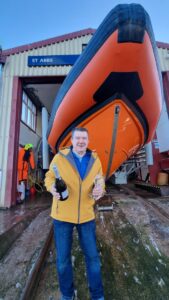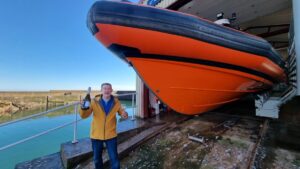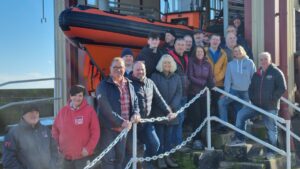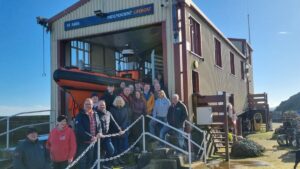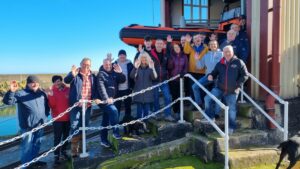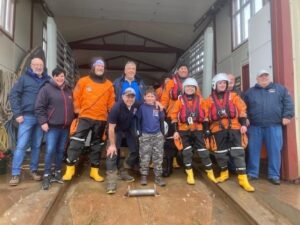Our Lifeboat
"Thomas Tunnock"
Our boat is a 900W Rigid Inflatable Boat from Liverpool-based MST (Marine Specialised Technology Ltd). MST is the world’s leading provider of Rigid Inflatable and High Speed Workboats for military and professional use. They also build the RNLI’s E-Class Lifeboats. A lot of hard work went into selecting the right boat following the decision to go independent in 2015. A small team visited MST, toured the factory and then took a run out on the Mersey in a demonstration craft to ensure the boat would meet our needs.
Our new lifeboat was officially named the “Thomas Tunnock” by our major donor Sir Boyd Tunnock on September 17th 2016 in a traditional lifeboat naming ceremony. Thousands of people were able to join us to celebrate and it was a particularly memorable occasion.
Technical details of our lifeboat:
Name: Thomas Tunnock
Manufacturer: Marine Specialised Technology
Model: 900W
Crew: 4
Length LOA: 9 metres
Beam BOA: 3.05 metres
Beam internal: 1.95 metres
Draught: 0.7 metres or 1 metres to base of skegs at 100% fuel and 4 pax
Displacement approx.: 2600kg
Maximum speed: 40 kts
Fuel capacity: 2 x 150 litres
Range approx.: 150 nautical miles (173 miles or 278 km)
Construction: Polyester Glass Reinforced Resin (GPR) construction using GRP protected marine ply under deck structure.
Engines: Twin OBM Mercury Optimax 200 HP units modified with PIRS (Post Immersion Restart System)
Survivor capacity: 12
- The "Thomas Tunnock" images below can be clicked to display larger images -
Our Story
A lifeboat has existed in St Abbs since 1911 following the sinking of the Danish steamer, the Alfred Erlandsen in 1907 with the loss of all hands. The lifeboat station has an illustrious record of service, having saved over 230 lives throughout its 112 year history. The lifeboat became independent following the RNLI’s decision to declare St Abbs non-operative and the subsequent campaign by our community to raise funds for a replacement boat. Our heritage and history is rich and this timeline gives you idea of what the lifeboat means to this community.
1905 Jane Hay settled in St Abbs
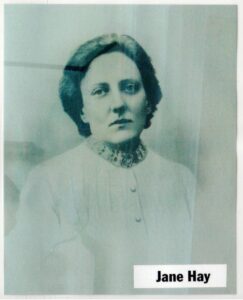
Jane Hay was a pioneering feminist and internationally known humanitarian campaigner who campaigned tirelessly to establish a lifeboat in St Abbs. She died on 26th January 1914, three years after she saw the first lifeboat launched, and she is buried in the churchyard at Coldingham.
1907 The Danish steamer, the Alfred Erlandsen sinks with the loss of all hands
The Alfred Erlandsen, a two masted steam ship (registered tonnage 954) was on route from the Russian port of Riga to Grangemouth with a cargo of timber pit-props for Messrs Kirkwood and Co., Glasgow. On board was the captain of the vessel, J Larsen, 17 crew, a woman passenger and a Great Dane dog. Only the Great Dane survived by swimming ashore.
It was not entirely clear why the Alfred Erlandsen hit the rocks of Ebb Carrs reef just off St Abbs on Thursday 17th October 1907, as she was well off her proper course. Miss Jane Hay of The Haven, St Abbs wrote to the Edinburgh Evening News on the matter “As one of those who witnessed the tragedy which occurred at St Abbs on Thursday night, I write to say that personally I shall never rest content till we have a lifeboat and rocket apparatus of our own in St Abbs”.
1908 Public meeting to elect the Lifeboat Crew and Executive Committee
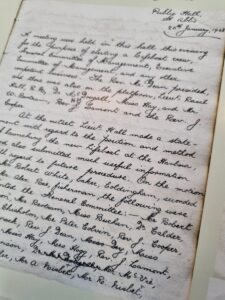 The Rev Dean presided at a meeting in the village hall on 25th January 1908 alongside Miss Hay and other local people. The general committee and the executive committee for the Lifeboat were appointed after a presentation by Lieut Basil Hall on how the lifeboat would be launched and future procedures. The crew appointed were as follows: John Wilson (coxswain), Alex Rae (2nd coxswain), Robert Aitchison, David Wilson, Alex Collins, James Colvin, Alex Rae, Peter Rae, John Nisbet, Hugh Rae, Alex Hood, Robert Blain, James Rae, Thomas Wilson, John Aitchison and Alex Hood. Later that year the committee agreed on the size of the new lifeboat to accommodate the engine. In recognition of her campaigning efforts, Miss Jane Hay became the honorary secretary of the new station. After her death the new Memorial Shed was erected by the RNLI in her memory.
The Rev Dean presided at a meeting in the village hall on 25th January 1908 alongside Miss Hay and other local people. The general committee and the executive committee for the Lifeboat were appointed after a presentation by Lieut Basil Hall on how the lifeboat would be launched and future procedures. The crew appointed were as follows: John Wilson (coxswain), Alex Rae (2nd coxswain), Robert Aitchison, David Wilson, Alex Collins, James Colvin, Alex Rae, Peter Rae, John Nisbet, Hugh Rae, Alex Hood, Robert Blain, James Rae, Thomas Wilson, John Aitchison and Alex Hood. Later that year the committee agreed on the size of the new lifeboat to accommodate the engine. In recognition of her campaigning efforts, Miss Jane Hay became the honorary secretary of the new station. After her death the new Memorial Shed was erected by the RNLI in her memory.
1911 The Helen Smitten was launched, St Abbs first Lifeboat
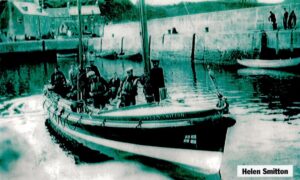 On 15th April 1911 a meeting was held to decide on two crew members (Thomas Wilson and Hugh Rae) who were to collect the lifeboat from Harwich with £10 to cover their costs. The St Abbs Lifeboat Station then opened on 25th April 1911 and the boat was formally christened the Helen Smitton on 5th August 1911 in the presence of the Great Dane who had survived the sinking of the Alfred Erlandsen. The boat was no ordinary one, it was a motor lifeboat and motor lifeboats were sufficiently rare along the coast to be a source of considerable interest. The Helen Smitton was a 38 ft Watson Class built in 1910 at the Thames Ironworks, Blackwall and was open-decked with sails, oars and an engine. During her service between 1911 and 1936 she undertook 27 launches and saved 37 lives.
On 15th April 1911 a meeting was held to decide on two crew members (Thomas Wilson and Hugh Rae) who were to collect the lifeboat from Harwich with £10 to cover their costs. The St Abbs Lifeboat Station then opened on 25th April 1911 and the boat was formally christened the Helen Smitton on 5th August 1911 in the presence of the Great Dane who had survived the sinking of the Alfred Erlandsen. The boat was no ordinary one, it was a motor lifeboat and motor lifeboats were sufficiently rare along the coast to be a source of considerable interest. The Helen Smitton was a 38 ft Watson Class built in 1910 at the Thames Ironworks, Blackwall and was open-decked with sails, oars and an engine. During her service between 1911 and 1936 she undertook 27 launches and saved 37 lives.
1912 First call to service
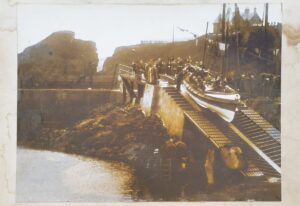
The St Abbs Lifeboat’s first call to service was on 19th March 1912 when it assisted four fishing cobles off St Abbs Head.
1914 September 5th The Sinking of HMS Pathfinder
HMS Pathfinder, a Royal Navy Scout Cruiser, was about 15 miles off St Abbs Head when there was a sudden explosion, witnessed by the coastguard in St Abbs. She was the first ship to be sunk by a marine-fired torpedo in WW1 and 246 men died as a result, with 18 known survivors. The War Office at the time tried to play down the sinking for fear of public panic at the efficiency of German U-boats. An account by a survivor, Lt (E) Edward Oliver Sonnenschein described how the ship “gave a heavy lurch forward and took an angle of about 40 degrees down by the bow. Water came swirling up to the searchlight platform. The Captain said ‘jump you devils, jump!” The Captain and his secretary remained with the ship until the end and somehow both survived.
Aldous Huxley witnessed the explosion and recorded the following in a letter to his father sent of 14th September 1914 “The St Abbs lifeboat came in with the most appalling accounts of the scene. There was not a piece of wood, they said, big enough to float a man – and over acres the sea was covered with fragments – human and otherwise. They brought back a sailors cap with half a mans head inside it. The explosion must have been frightful”
1936 - 1949
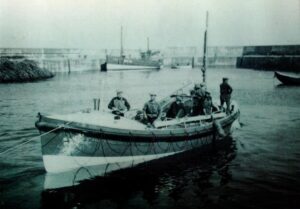 Annie Ronald and Isabella Forrest was launched. She was a Liverpool Class – single engine, built at J Samuel White, Cowes. This boat undertook 28 launches during its service and saved 73 lives.
Annie Ronald and Isabella Forrest was launched. She was a Liverpool Class – single engine, built at J Samuel White, Cowes. This boat undertook 28 launches during its service and saved 73 lives.
1949 - 1953
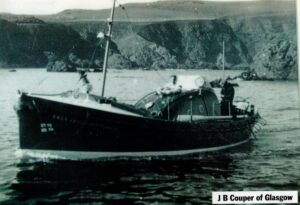 J B Couper of Glasgow was launched. During its 4 years of service it undertook 4 launches and saved 1 life. The boat was a Liverpool Class – twin engine boat built by Groves and Guttridge of Cowes.
J B Couper of Glasgow was launched. During its 4 years of service it undertook 4 launches and saved 1 life. The boat was a Liverpool Class – twin engine boat built by Groves and Guttridge of Cowes.
1953 - 1964
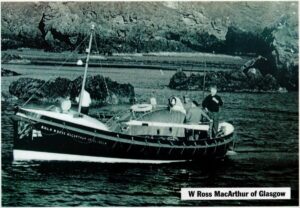
W Ross MacArthur of Glasgow was launched. Also a Liverpool Class twin engine built at Groves and Guttridge. She undertook 32 launches and saved 16 lives.
1964 - 1974
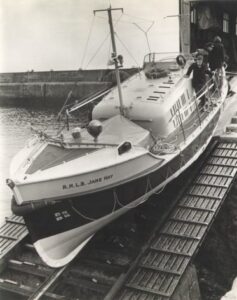
Jane Hay was the fifth boat in St Abbs. She was a 37ft Oakley-class built at William Osbourne of Littlehampton. The Oakley was a recent self-righting design which combined great stability with the ability to self-right in the event of capsizing by using a shifting water ballast. She made 20 launches and saved 8 lives.
1974 - 1986
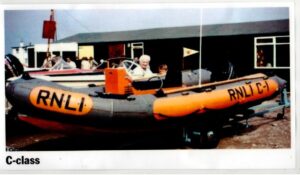
The boats from 1974 – 1986 were all inshore boats and of a different type altogether. As they were relief boats, they were unnamed. The first was a D-class (RFD PB16) inflatable. The second was a D-class (zodiac III) and the third was a C-class.
1986 - 2001
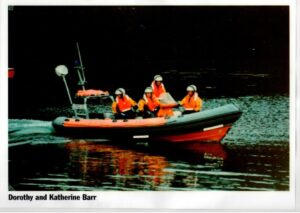 In 1986 a new Atlantic 21-class boat, Dorothy and Katherine Barr (B-572) arrived. This was the first generation of Rigid Inflatable Boats (RIBs). Still and inshore boat, she served St Abbs from 1986 to 2001.
In 1986 a new Atlantic 21-class boat, Dorothy and Katherine Barr (B-572) arrived. This was the first generation of Rigid Inflatable Boats (RIBs). Still and inshore boat, she served St Abbs from 1986 to 2001.
2001 - 2002
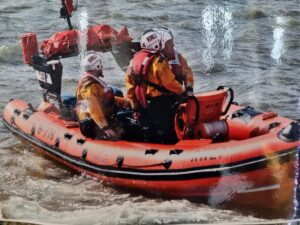 Two more Atlantic 21-class boats followed. The Institute of London Underwriters (B579) from 2001 – 2002 and the Burton Brewer (B-568) for a short time in 2002. These were also relief boats.
Two more Atlantic 21-class boats followed. The Institute of London Underwriters (B579) from 2001 – 2002 and the Burton Brewer (B-568) for a short time in 2002. These were also relief boats.
2002 - 2015
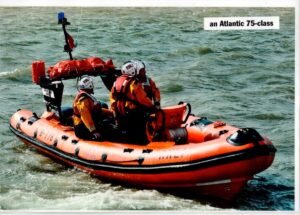 Another Dorothy and Katherine Barr II (B-783) (named after benefactors from the Barrs Iron Brew family) arrived in 2002. She was an Atlantic 75-class, the second generation of RIB boats, which now had a ballast tank at the front of the boat .
Another Dorothy and Katherine Barr II (B-783) (named after benefactors from the Barrs Iron Brew family) arrived in 2002. She was an Atlantic 75-class, the second generation of RIB boats, which now had a ballast tank at the front of the boat .
The last RNLI lifeboat at St Abbs was The Boys' Brigade , another Atlantic 75-class. She was here for only a few months before the closure of the Lifeboat Station
2015 The End of an Era
In May 2015 the RNLI determined that the station in St Abbs should be closed and instead a second inshore boat would be put in Eyemouth. The crew, community and public were alarmed and fought a strong campaign to persuade the RNLI to reverse its decision. They felt that the unique nature of St Abbs demanded a boat close by and a crew with local knowledge. Despite tremendous support from many, including the British Sub-Aqua Club, the National Trust for Scotland, local MPs and MSPs, Scottish Borders Council and a petition signed by 13,500 people, the RNLI was unmoved. The boat was removed on 8th September 2015. After 104 years and over 330 lives saved, there was no lifeboat in St Abbs.
2016 The Start of a New Era
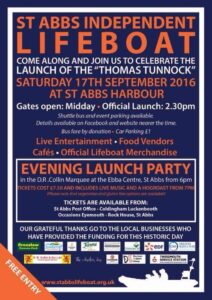 Deeply disappointed, but undaunted, the campaign changed tack and instead started to raise funds for a new independent lifeboat. Support and generosity was tremendous and a five year plan was cut short to just one year after a significant donation from Boyd Tunnock which enabled a new boat to be purchased. The new boat, The Thomas Tunnock, was launched on 17th September 2016.
Deeply disappointed, but undaunted, the campaign changed tack and instead started to raise funds for a new independent lifeboat. Support and generosity was tremendous and a five year plan was cut short to just one year after a significant donation from Boyd Tunnock which enabled a new boat to be purchased. The new boat, The Thomas Tunnock, was launched on 17th September 2016.
The story of our campaign is documented in more detail in our News section. Donations from individuals, community groups, local businesses, diving, canoeing and angling communities continue and are essential to the operation of the lifeboat. The “Support St Abbs Lifeboat” merchandise, designed to raise funds at the start of the campaign, continues to be incredibly popular and is now sold through the lifeboat shop in the harbour, and online. This income is also an essential part of the funding to keep the lifeboat in St Abbs in perpetuity.
1905 Jane Hay settled in St Abbs

Jane Hay was a pioneering feminist and internationally known humanitarian campaigner who campaigned tirelessly to establish a lifeboat in St Abbs. She died on 26th January 1914, three years after she saw the first lifeboat launched, and she is buried in the churchyard at Coldingham.
1907 The Danish steamer, the Alfred Erlandsen sinks with the loss of all hands
The Alfred Erlandsen, a two masted steam ship (registered tonnage 954) was on route from the Russian port of Riga to Grangemouth with a cargo of timber pit-props for Messrs Kirkwood and Co., Glasgow. On board was the captain of the vessel, J Larsen, 17 crew, a woman passenger and a Great Dane dog. Only the Great Dane survived by swimming ashore.
It was not entirely clear why the Alfred Erlandsen hit the rocks of Ebb Carrs reef just off St Abbs on Thursday 17th October 1907, as she was well off her proper course. Miss Jane Hay of The Haven, St Abbs wrote to the Edinburgh Evening News on the matter “As one of those who witnessed the tragedy which occurred at St Abbs on Thursday night, I write to say that personally I shall never rest content till we have a lifeboat and rocket apparatus of our own in St Abbs”.
1908 Public meeting to elect the Lifeboat Crew and Executive Committee
 The Rev Dean presided at a meeting in the village hall on 25th January 1908 alongside Miss Hay and other local people. The general committee and the executive committee for the Lifeboat were appointed after a presentation by Lieut Basil Hall on how the lifeboat would be launched and future procedures. The crew appointed were as follows: John Wilson (coxswain), Alex Rae (2nd coxswain), Robert Aitchison, David Wilson, Alex Collins, James Colvin, Alex Rae, Peter Rae, John Nisbet, Hugh Rae, Alex Hood, Robert Blain, James Rae, Thomas Wilson, John Aitchison and Alex Hood. Later that year the committee agreed on the size of the new lifeboat to accommodate the engine. In recognition of her campaigning efforts, Miss Jane Hay became the honorary secretary of the new station. After her death the new Memorial Shed was erected by the RNLI in her memory.
The Rev Dean presided at a meeting in the village hall on 25th January 1908 alongside Miss Hay and other local people. The general committee and the executive committee for the Lifeboat were appointed after a presentation by Lieut Basil Hall on how the lifeboat would be launched and future procedures. The crew appointed were as follows: John Wilson (coxswain), Alex Rae (2nd coxswain), Robert Aitchison, David Wilson, Alex Collins, James Colvin, Alex Rae, Peter Rae, John Nisbet, Hugh Rae, Alex Hood, Robert Blain, James Rae, Thomas Wilson, John Aitchison and Alex Hood. Later that year the committee agreed on the size of the new lifeboat to accommodate the engine. In recognition of her campaigning efforts, Miss Jane Hay became the honorary secretary of the new station. After her death the new Memorial Shed was erected by the RNLI in her memory.
1911 The Helen Smitten was launched, St Abbs first Lifeboat
 On 15th April 1911 a meeting was held to decide on two crew members (Thomas Wilson and Hugh Rae) who were to collect the lifeboat from Harwich with £10 to cover their costs. The St Abbs Lifeboat Station then opened on 25th April 1911 and the boat was formally christened the Helen Smitton on 5th August 1911 in the presence of the Great Dane who had survived the sinking of the Alfred Erlandsen. The boat was no ordinary one, it was a motor lifeboat and motor lifeboats were sufficiently rare along the coast to be a source of considerable interest. The Helen Smitton was a 38 ft Watson Class built in 1910 at the Thames Ironworks, Blackwall and was open-decked with sails, oars and an engine. During her service between 1911 and 1936 she undertook 27 launches and saved 37 lives.
On 15th April 1911 a meeting was held to decide on two crew members (Thomas Wilson and Hugh Rae) who were to collect the lifeboat from Harwich with £10 to cover their costs. The St Abbs Lifeboat Station then opened on 25th April 1911 and the boat was formally christened the Helen Smitton on 5th August 1911 in the presence of the Great Dane who had survived the sinking of the Alfred Erlandsen. The boat was no ordinary one, it was a motor lifeboat and motor lifeboats were sufficiently rare along the coast to be a source of considerable interest. The Helen Smitton was a 38 ft Watson Class built in 1910 at the Thames Ironworks, Blackwall and was open-decked with sails, oars and an engine. During her service between 1911 and 1936 she undertook 27 launches and saved 37 lives.
1912 First call to service

The St Abbs Lifeboat’s first call to service was on 19th March 1912 when it assisted four fishing cobles off St Abbs Head.
1914 September 5th The Sinking of HMS Pathfinder
HMS Pathfinder, a Royal Navy Scout Cruiser, was about 15 miles off St Abbs Head when there was a sudden explosion, witnessed by the coastguard in St Abbs. She was the first ship to be sunk by a marine-fired torpedo in WW1 and 246 men died as a result, with 18 known survivors. The War Office at the time tried to play down the sinking for fear of public panic at the efficiency of German U-boats. An account by a survivor, Lt (E) Edward Oliver Sonnenschein described how the ship “gave a heavy lurch forward and took an angle of about 40 degrees down by the bow. Water came swirling up to the searchlight platform. The Captain said ‘jump you devils, jump!” The Captain and his secretary remained with the ship until the end and somehow both survived.
Aldous Huxley witnessed the explosion and recorded the following in a letter to his father sent of 14th September 1914 “The St Abbs lifeboat came in with the most appalling accounts of the scene. There was not a piece of wood, they said, big enough to float a man – and over acres the sea was covered with fragments – human and otherwise. They brought back a sailors cap with half a mans head inside it. The explosion must have been frightful”
1936 - 1949
 Annie Ronald and Isabella Forrest was launched. She was a Liverpool Class – single engine, built at J Samuel White, Cowes. This boat undertook 28 launches during its service and saved 73 lives.
Annie Ronald and Isabella Forrest was launched. She was a Liverpool Class – single engine, built at J Samuel White, Cowes. This boat undertook 28 launches during its service and saved 73 lives.
1949 - 1953
 J B Couper of Glasgow was launched. During its 4 years of service it undertook 4 launches and saved 1 life. The boat was a Liverpool Class – twin engine boat built by Groves and Guttridge of Cowes.
J B Couper of Glasgow was launched. During its 4 years of service it undertook 4 launches and saved 1 life. The boat was a Liverpool Class – twin engine boat built by Groves and Guttridge of Cowes.
1953 - 1964

W Ross MacArthur of Glasgow was launched. Also a Liverpool Class twin engine built at Groves and Guttridge. She undertook 32 launches and saved 16 lives.
1964 - 1974

Jane Hay was the fifth boat in St Abbs. She was a 37ft Oakley-class built at William Osbourne of Littlehampton. The Oakley was a recent self-righting design which combined great stability with the ability to self-right in the event of capsizing by using a shifting water ballast. She made 20 launches and saved 8 lives.
1974 - 1986

The boats from 1974 – 1986 were all inshore boats and of a different type altogether. As they were relief boats, they were unnamed. The first was a D-class (RFD PB16) inflatable. The second was a D-class (zodiac III) and the third was a C-class.
1986 - 2001
 In 1986 a new Atlantic 21-class boat, Dorothy and Katherine Barr (B-572) arrived. This was the first generation of Rigid Inflatable Boats (RIBs). Still and inshore boat, she served St Abbs from 1986 to 2001.
In 1986 a new Atlantic 21-class boat, Dorothy and Katherine Barr (B-572) arrived. This was the first generation of Rigid Inflatable Boats (RIBs). Still and inshore boat, she served St Abbs from 1986 to 2001.
2001 - 2002
 Two more Atlantic 21-class boats followed. The Institute of London Underwriters (B579) from 2001 – 2002 and the Burton Brewer (B-568) for a short time in 2002. These were also relief boats.
Two more Atlantic 21-class boats followed. The Institute of London Underwriters (B579) from 2001 – 2002 and the Burton Brewer (B-568) for a short time in 2002. These were also relief boats.
2002 - 2015
 Another Dorothy and Katherine Barr II (B-783) (named after benefactors from the Barrs Iron Brew family) arrived in 2002. She was an Atlantic 75-class, the second generation of RIB boats, which now had a ballast tank at the front of the boat .
Another Dorothy and Katherine Barr II (B-783) (named after benefactors from the Barrs Iron Brew family) arrived in 2002. She was an Atlantic 75-class, the second generation of RIB boats, which now had a ballast tank at the front of the boat .
The last RNLI lifeboat at St Abbs was The Boys' Brigade , another Atlantic 75-class. She was here for only a few months before the closure of the Lifeboat Station
2015 The End of an Era
In May 2015 the RNLI determined that the station in St Abbs should be closed and instead a second inshore boat would be put in Eyemouth. The crew, community and public were alarmed and fought a strong campaign to persuade the RNLI to reverse its decision. They felt that the unique nature of St Abbs demanded a boat close by and a crew with local knowledge. Despite tremendous support from many, including the British Sub-Aqua Club, the National Trust for Scotland, local MPs and MSPs, Scottish Borders Council and a petition signed by 13,500 people, the RNLI was unmoved. The boat was removed on 8th September 2015. After 104 years and over 330 lives saved, there was no lifeboat in St Abbs.
2016 The Start of a New Era
 Deeply disappointed, but undaunted, the campaign changed tack and instead started to raise funds for a new independent lifeboat. Support and generosity was tremendous and a five year plan was cut short to just one year after a significant donation from Boyd Tunnock which enabled a new boat to be purchased. The new boat, The Thomas Tunnock, was launched on 17th September 2016.
Deeply disappointed, but undaunted, the campaign changed tack and instead started to raise funds for a new independent lifeboat. Support and generosity was tremendous and a five year plan was cut short to just one year after a significant donation from Boyd Tunnock which enabled a new boat to be purchased. The new boat, The Thomas Tunnock, was launched on 17th September 2016.
The story of our campaign is documented in more detail in our News section. Donations from individuals, community groups, local businesses, diving, canoeing and angling communities continue and are essential to the operation of the lifeboat. The “Support St Abbs Lifeboat” merchandise, designed to raise funds at the start of the campaign, continues to be incredibly popular and is now sold through the lifeboat shop in the harbour, and online. This income is also an essential part of the funding to keep the lifeboat in St Abbs in perpetuity.
How We Operate
Launch
We are proud to be an HM Coastguard Declared Facility. As such, the overall operation of the lifeboat achieves the standard required by HM Coastguard, the Rescue Boat Code and our Standard Operating Procedures. We operate within a 20 mile radius of St Abbs harbour, technically covering an area from Lindisfarne to Bass Rock along the coastline.
Authority to launch rests with the designated Launch Operations Manager (LOM) or one of the designated Deputy Launch Authorities (DLAs), all of whom are contacted by HMCG Maritime Operations Network via an agreed alerting system when there is an emergency. Our current Lifeboat Operations Manager (LOM) (Mark Wardle) runs the station with assistance from the Deputy Launch Authorities (DLAs) (Alistair Crowe, Gus Skene, Lenny Crowe, James Crowe, Jim Wilson, Stephen Hood).
We are coordinated by CGOC Aberdeen in Maritime Operational Zone 4, however we also retain the discretion to launch the boat independently in response to a report received from any source that a vessel or persons are in danger.
The lifeboat is permanently on standby in readiness for instruction from the Coastguard or our LOM. The maximum weather conditions for safe operation are winds up to Beaufort gale force eight and wave height up to four metres. Dependent upon wind direction and sea state, the final decision as to whether the boat can launch always remains with the LOM, DLA, or Helmsman.
We also work closely with other adjacent lifeboat teams (RNLI Eyemouth, RNLI Dunbar and RNLI Berwick) as well as with Police Scotland, Scottish Fire & Rescue Services and Scottish Ambulance Services.
St Abbs Independent Lifeboat is one of around 50 independent rescue services that operate around the UK. We are a founding member of the newly formed National Independent Lifeboat Association (NILA) which represents independent lifeboats at a national level.
Shouts
Most emergency services use the word “shout” to reference a call out where their services are required. Apparently, this comes from olden days when fire crews would shout out to clear the way for their engines through bustling, narrow streets. The cry was 'Hi-ya, Hi-ya, Hi'! We have a siren and a pager system in St Abbs now, so no shouting is involved!
We respond to a wide range of maritime or coastal emergencies. Vessels in distress might make a MAYDAY call which means that there is imminent danger to life or to the continued viability of the vessel itself and immediate rescue is required. Alternatively, the message PAN-PAN is the international standard urgency signal to declare that a vessel needs help and that the situation is urgent, but for the time being, does not pose an immediate danger to anyone's life or to the vessel itself.
Our shouts historically cover stricken vessels, diving incidents, cliff falls and fishing accidents and The Thomas Tunnock has been called to service many times each year:
Number of Shouts for St Abbs Independent Lifeboat
2016 : 2
2017 : 8
2018 : 13
2019 : 13
2020 : 8
2021 : 10
2022 : 6
2023 : 8
2024 : 6 to date
